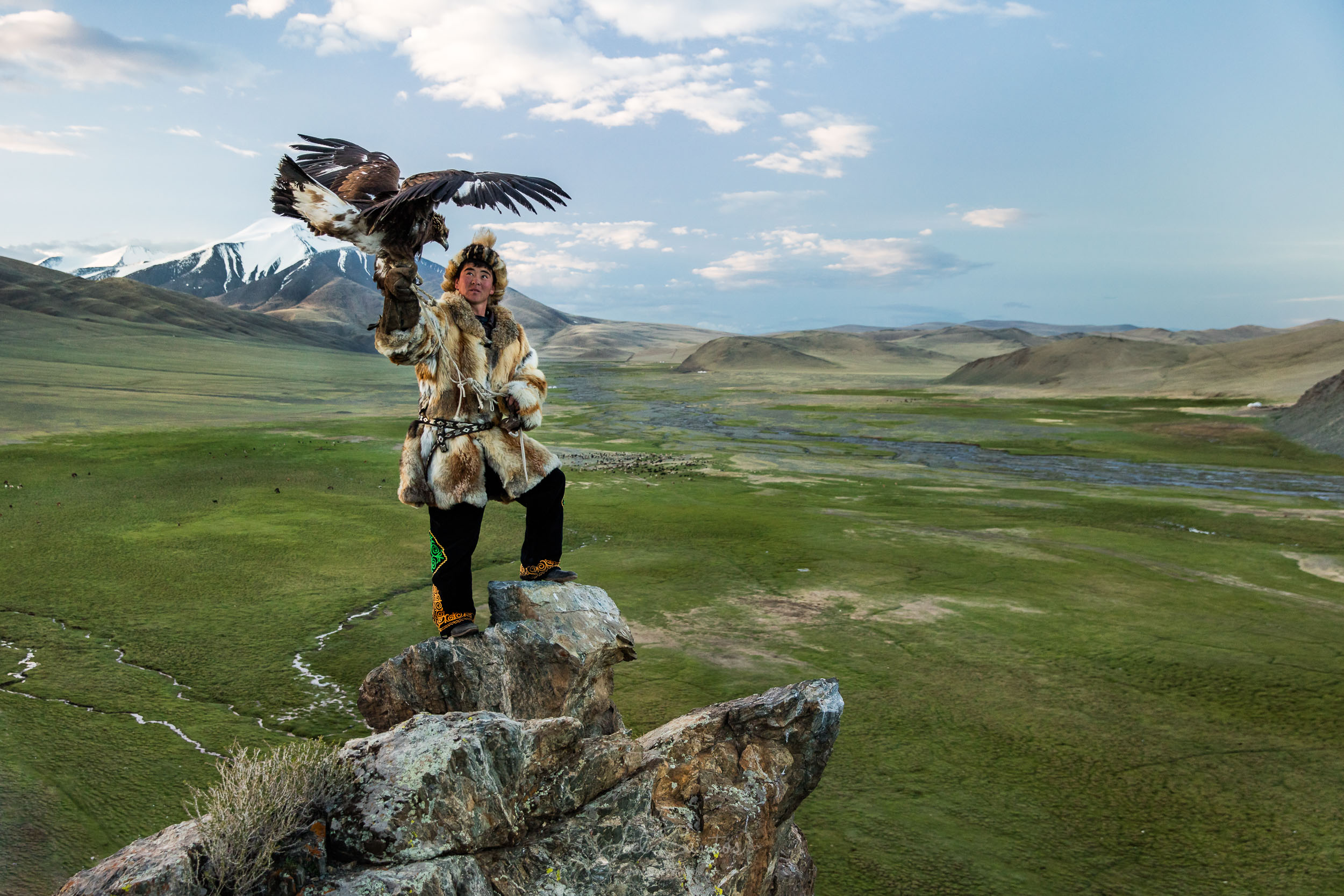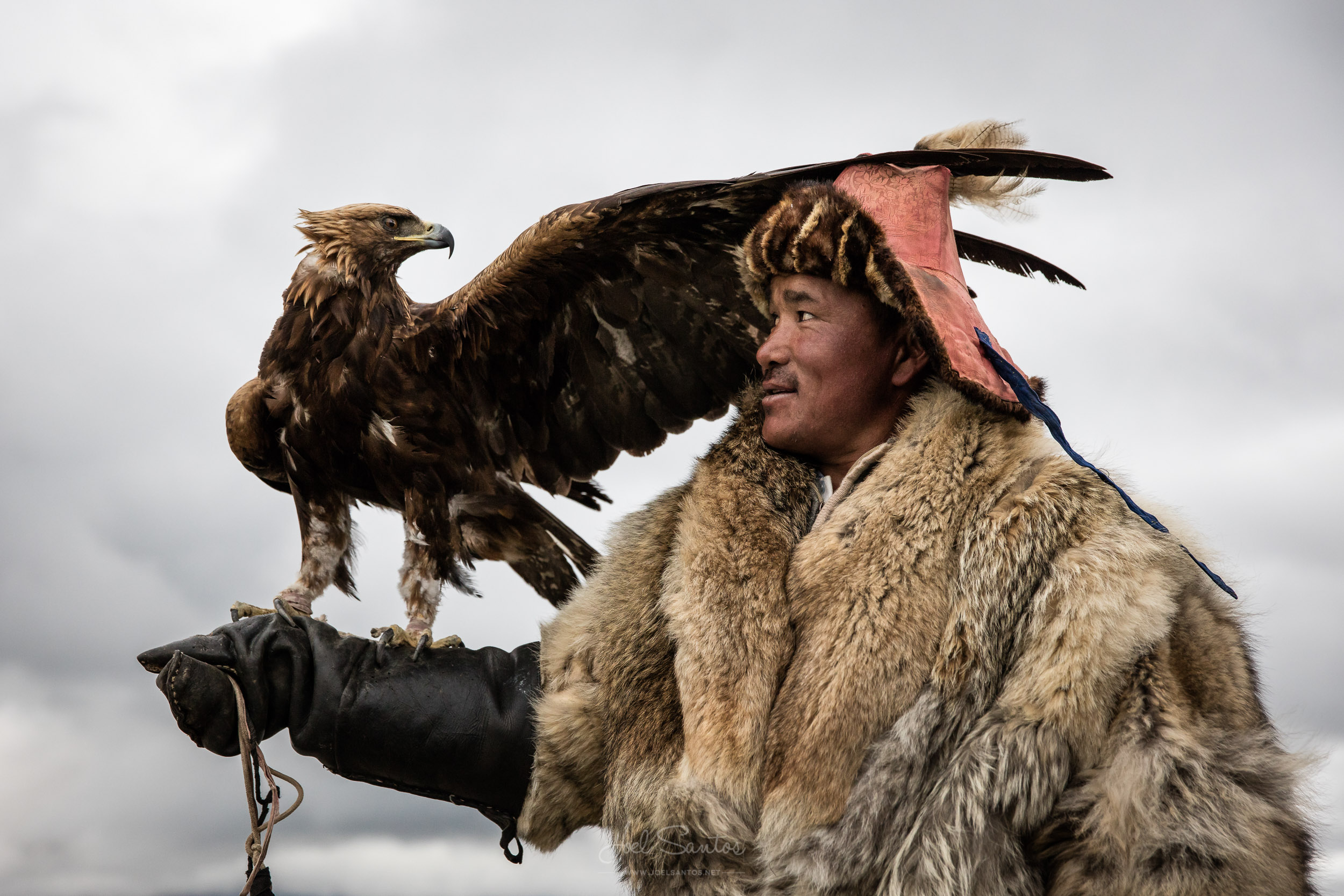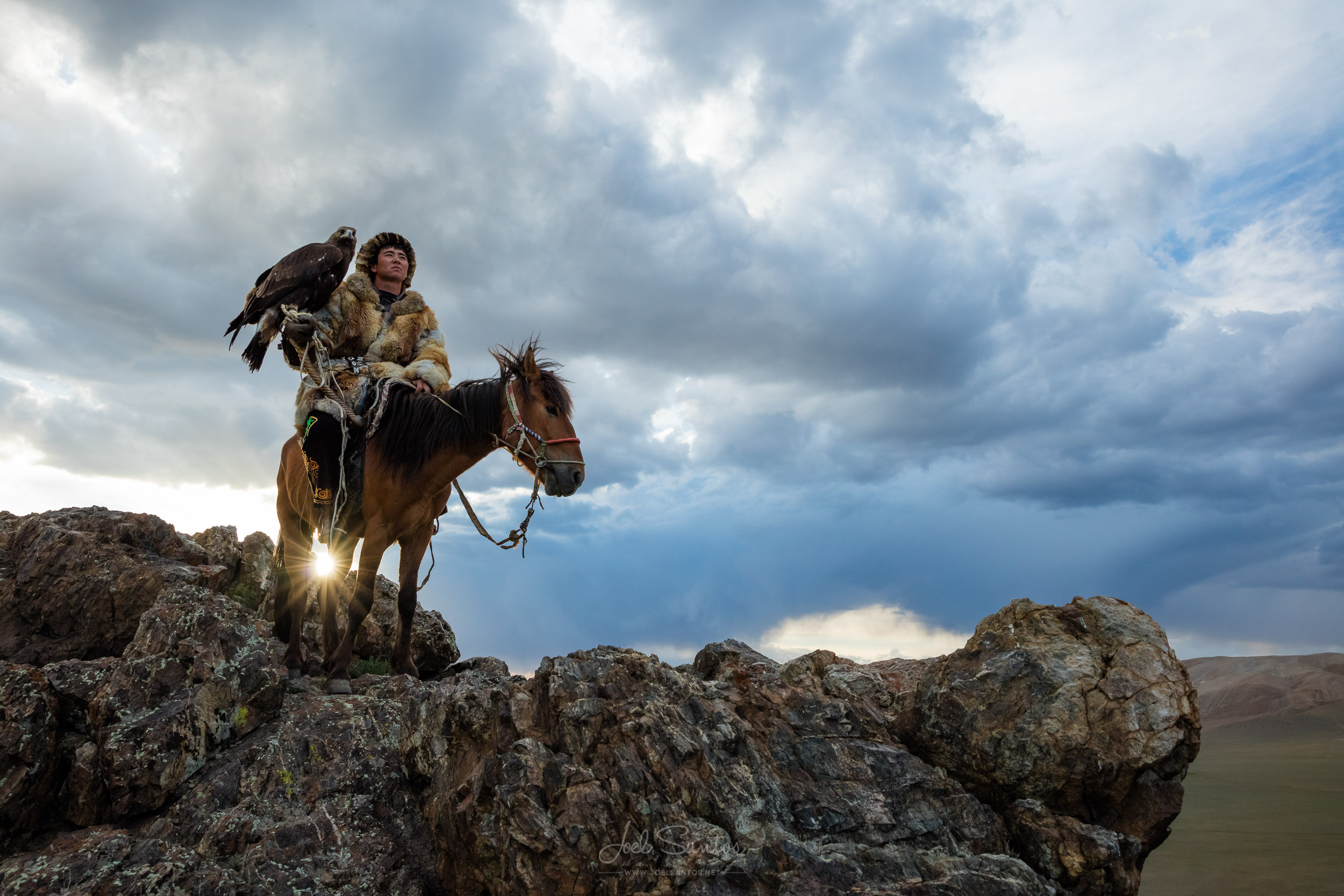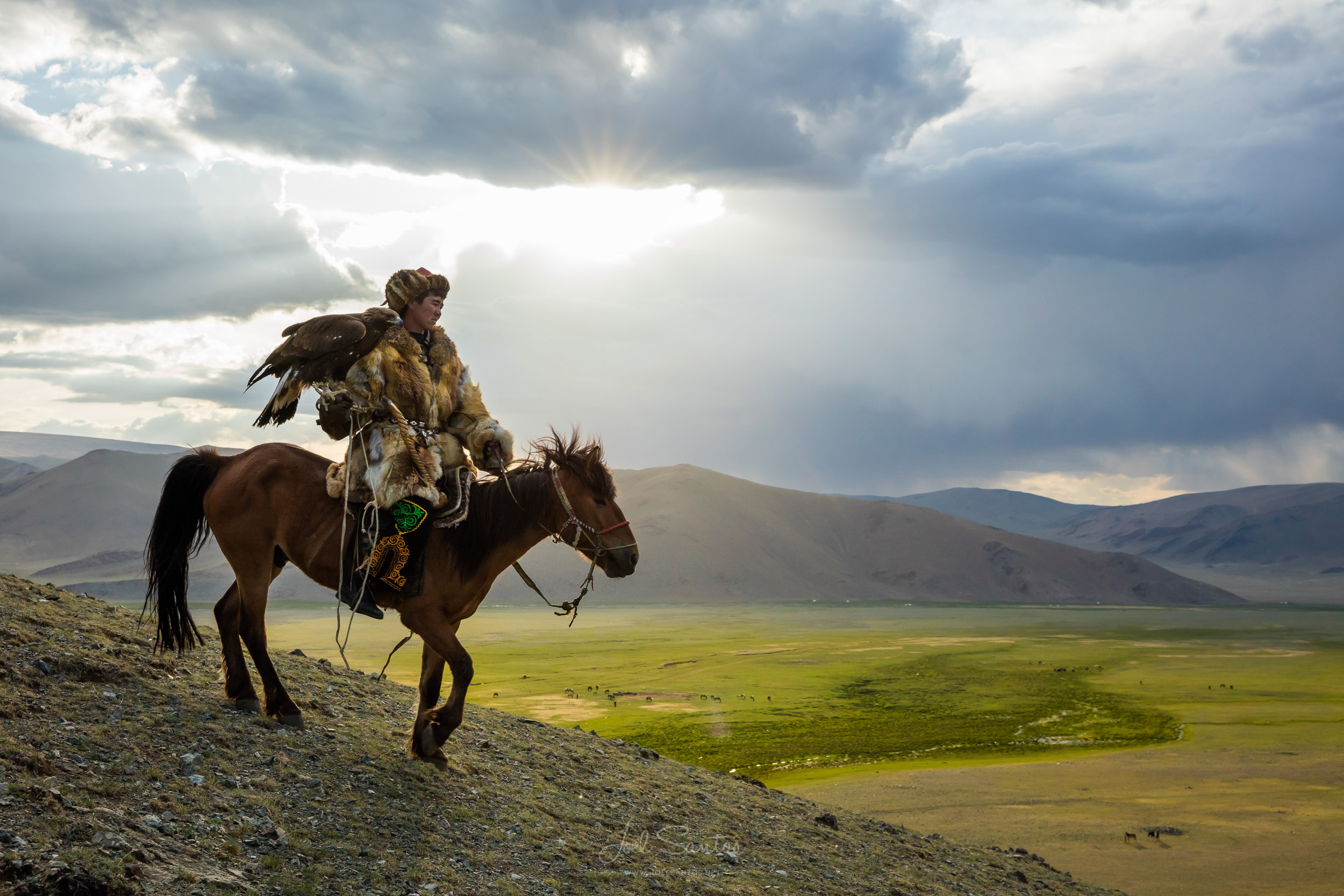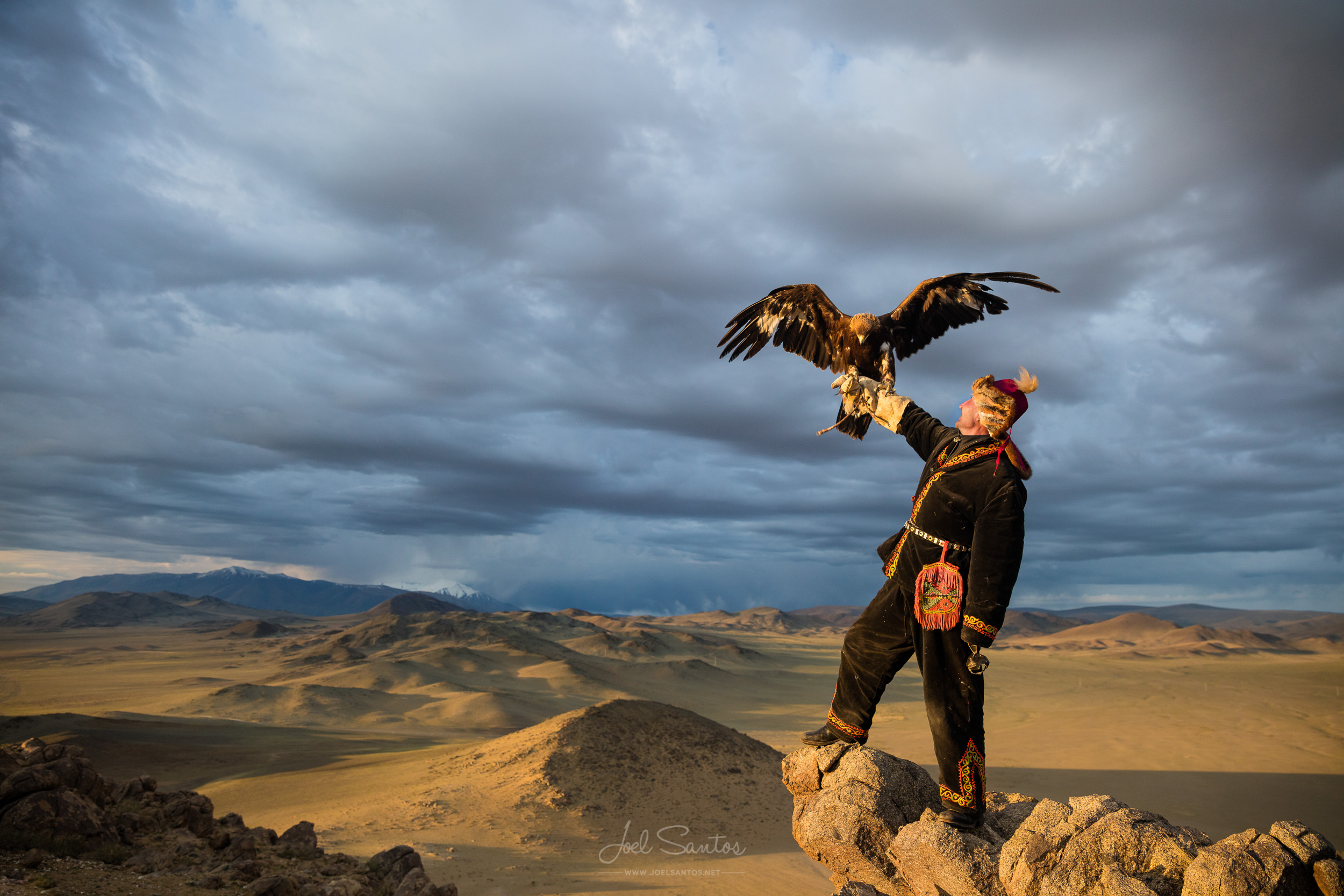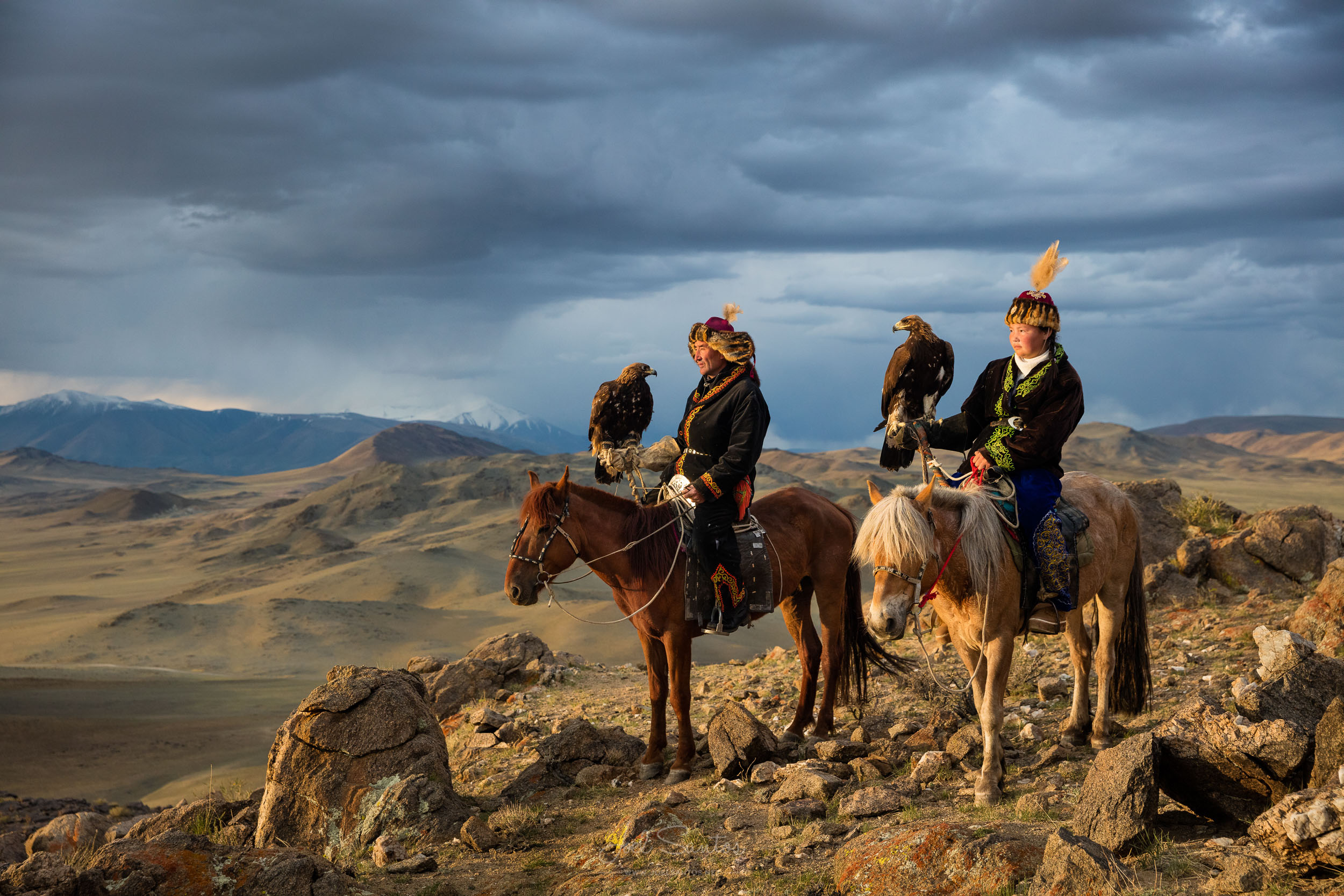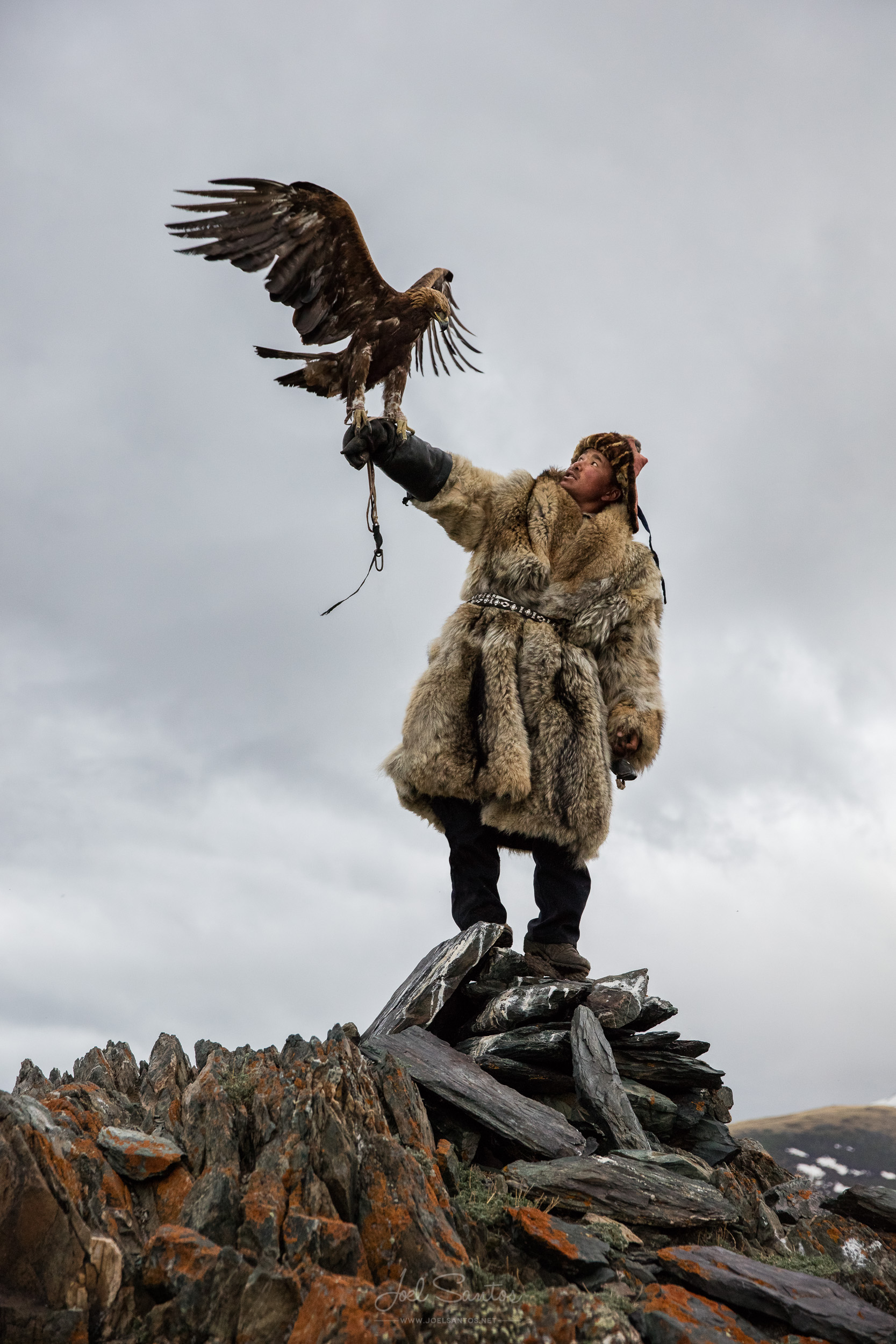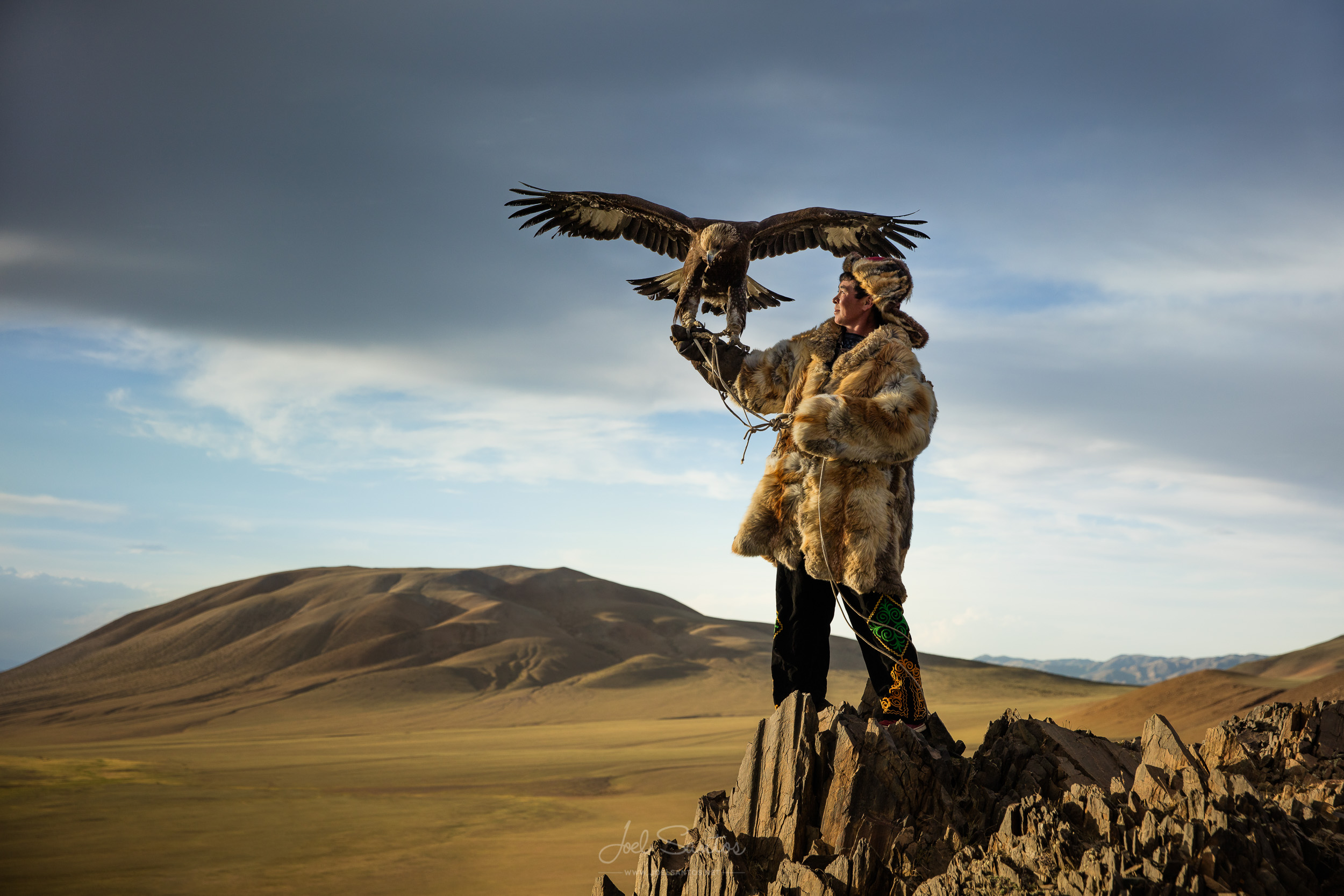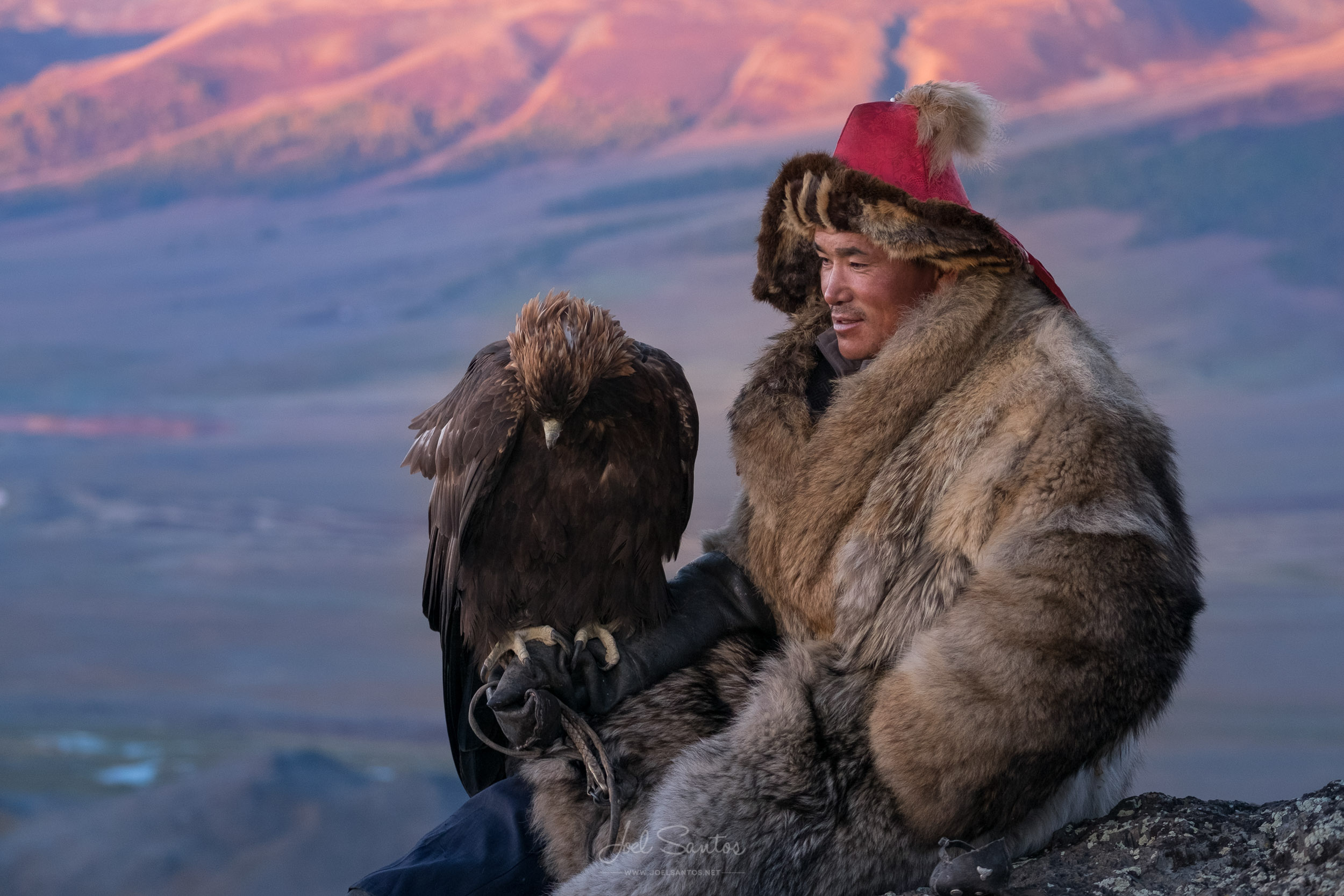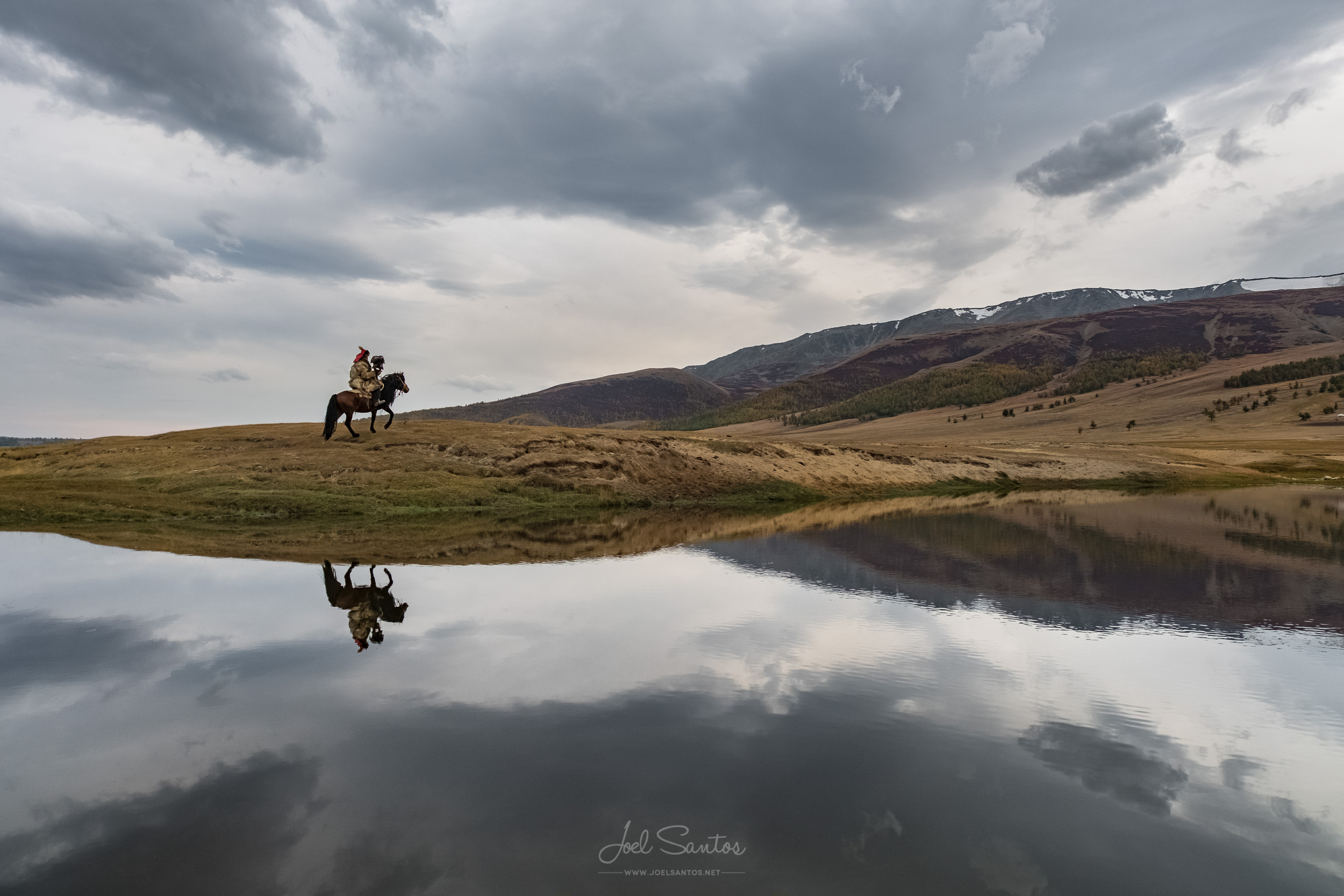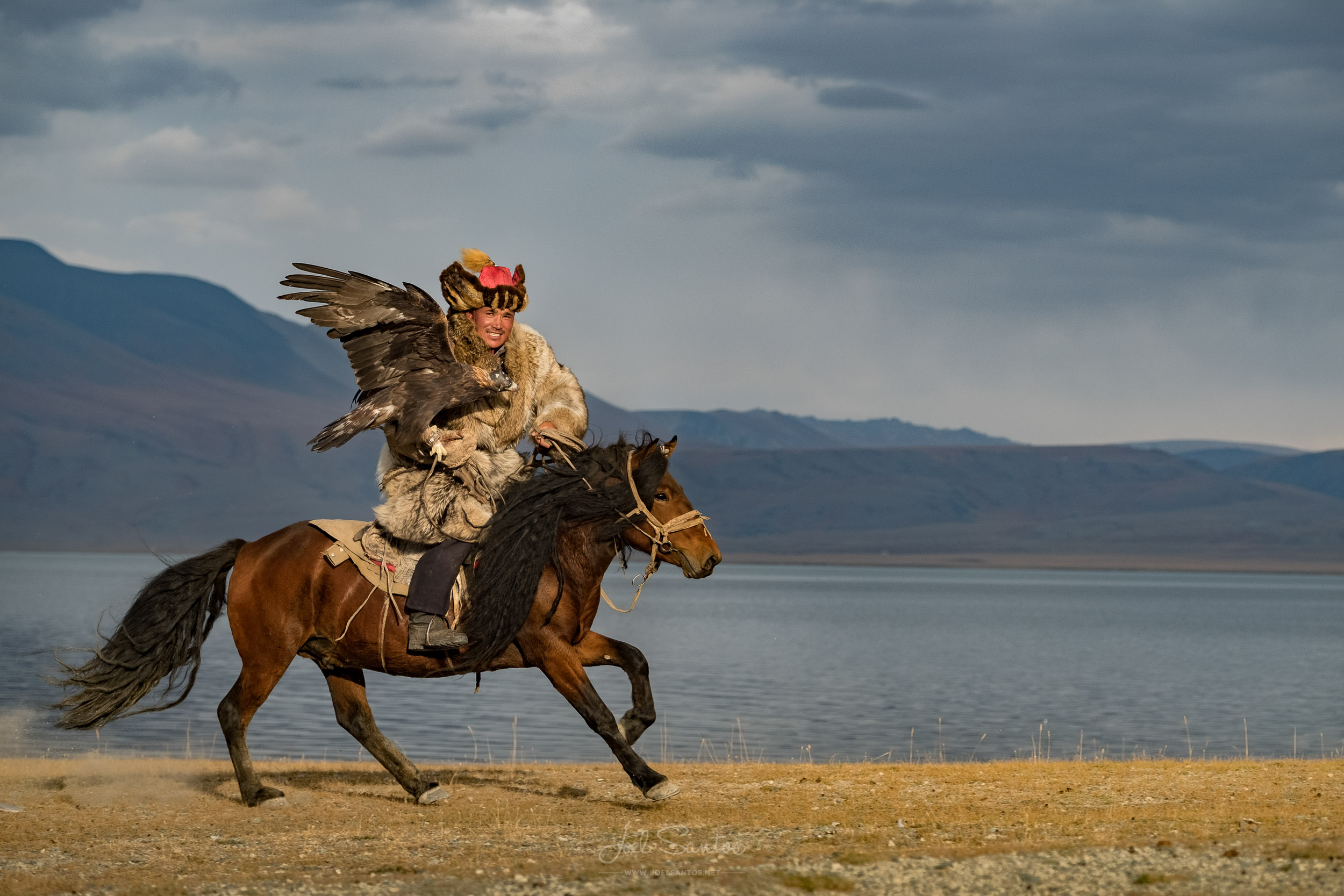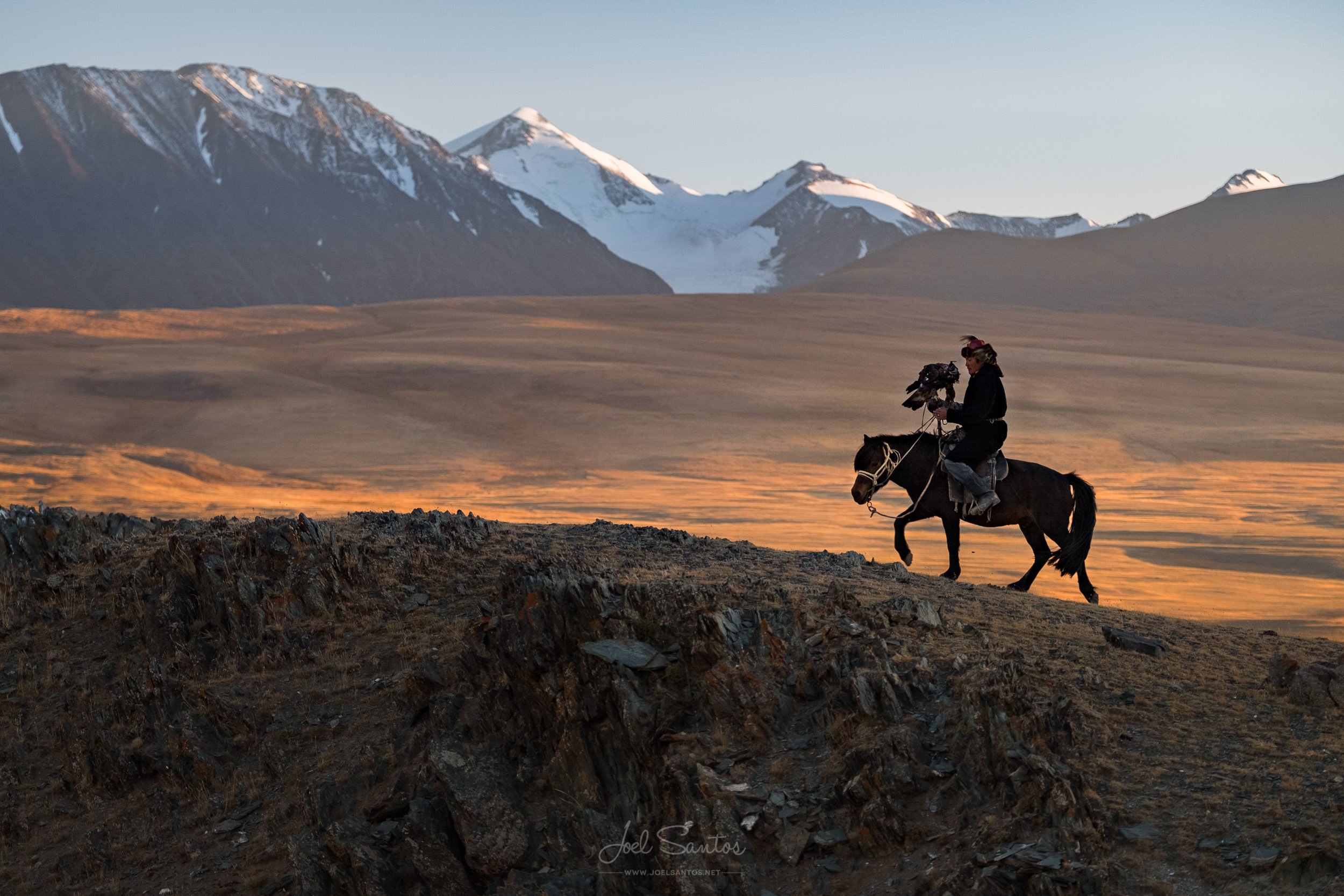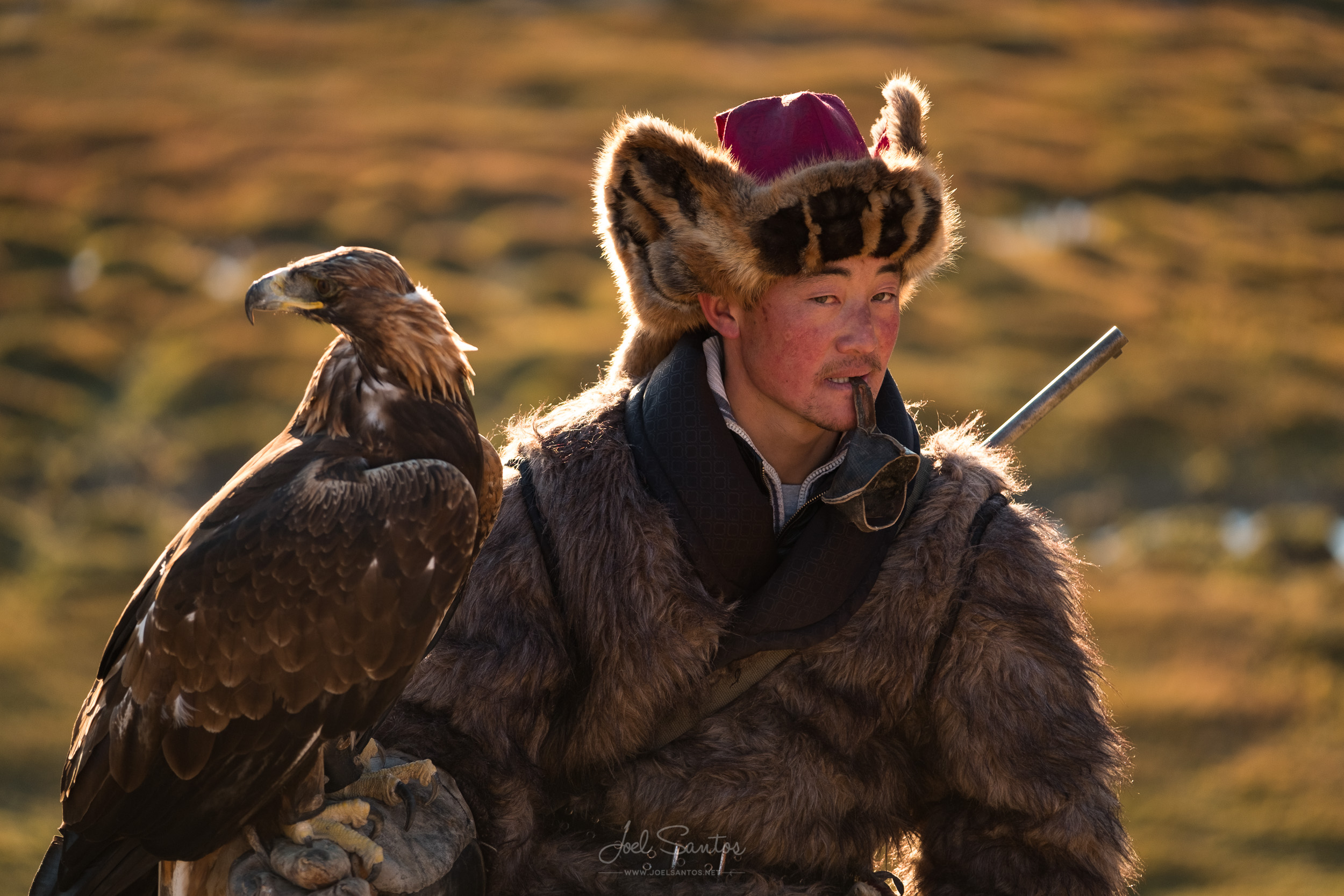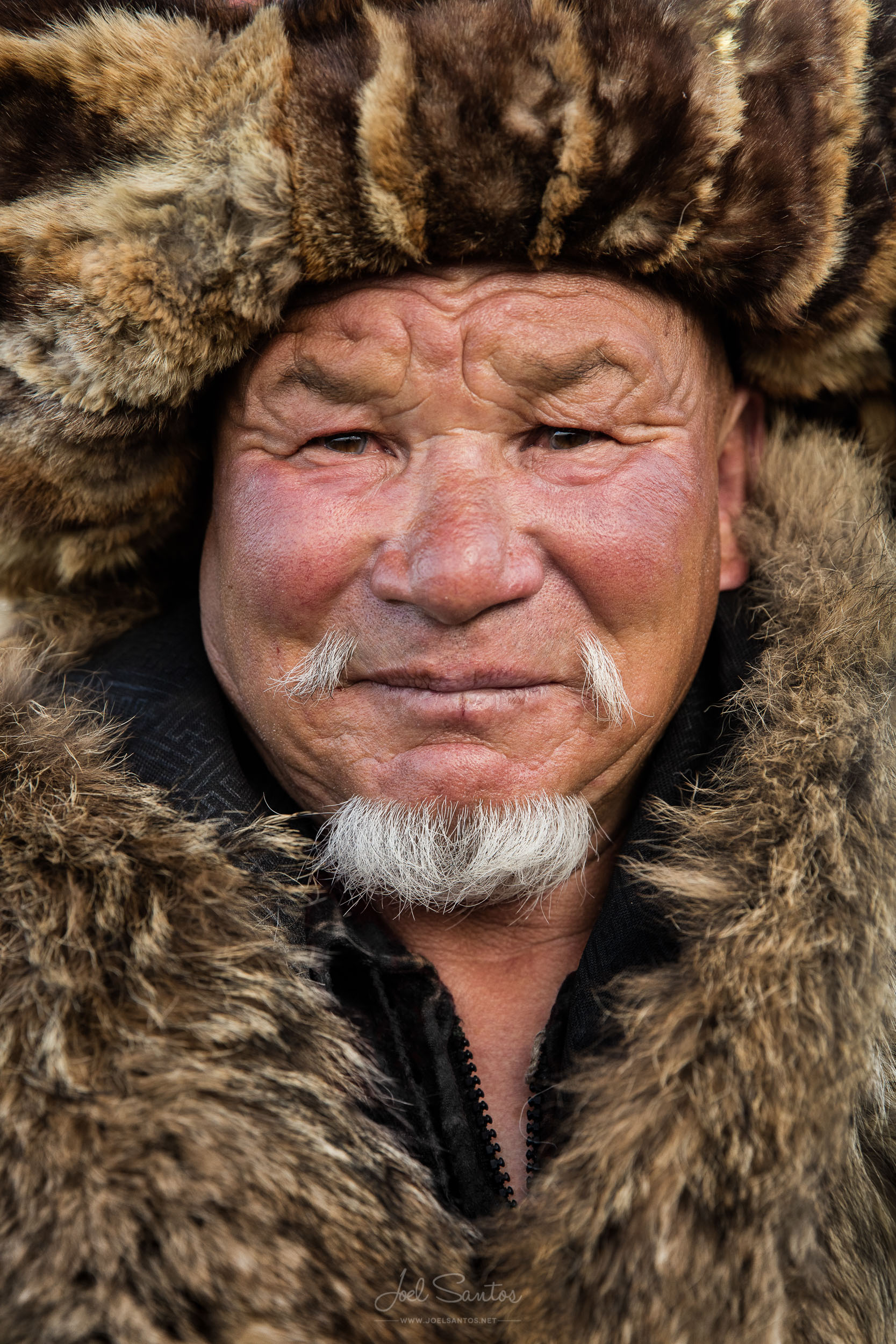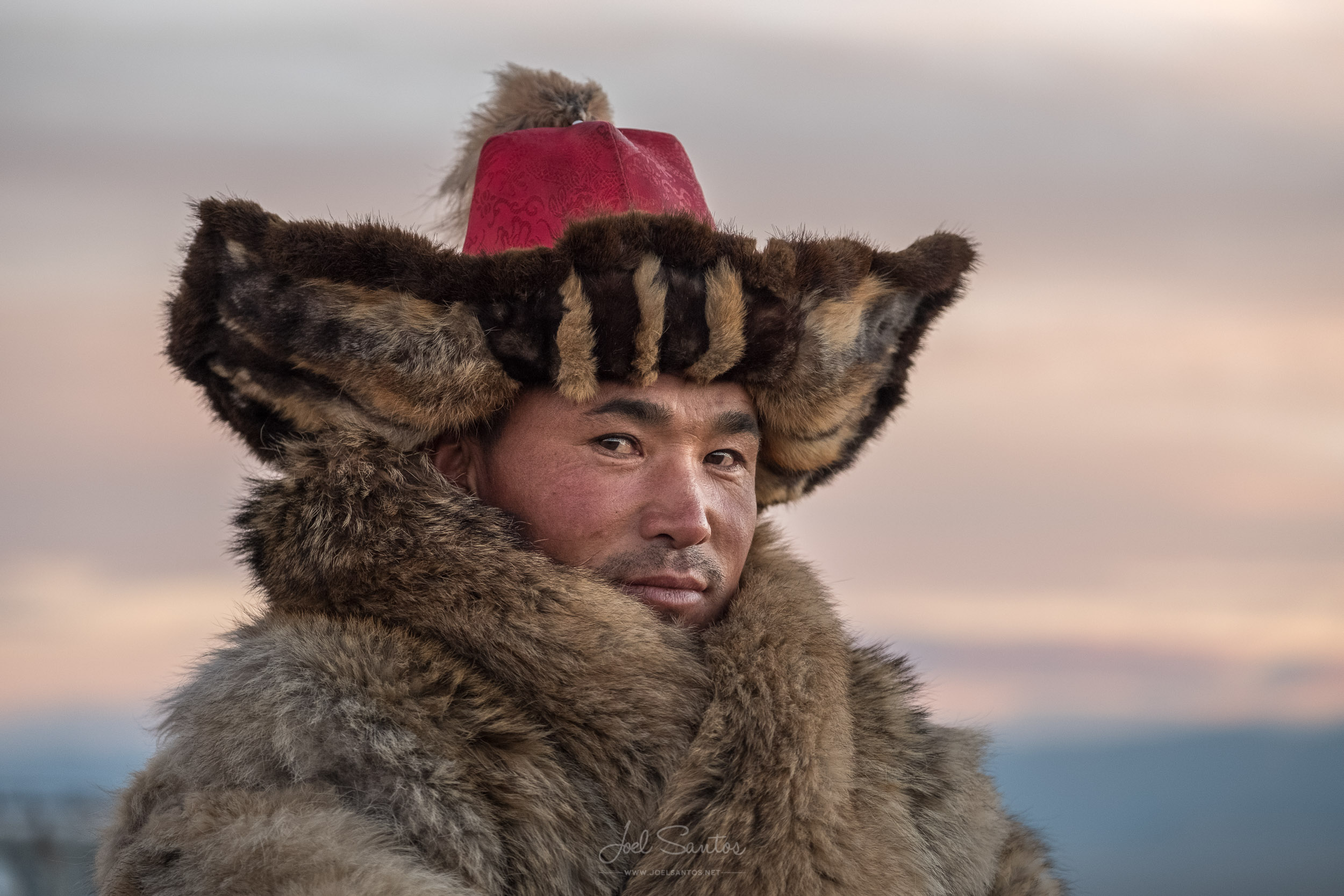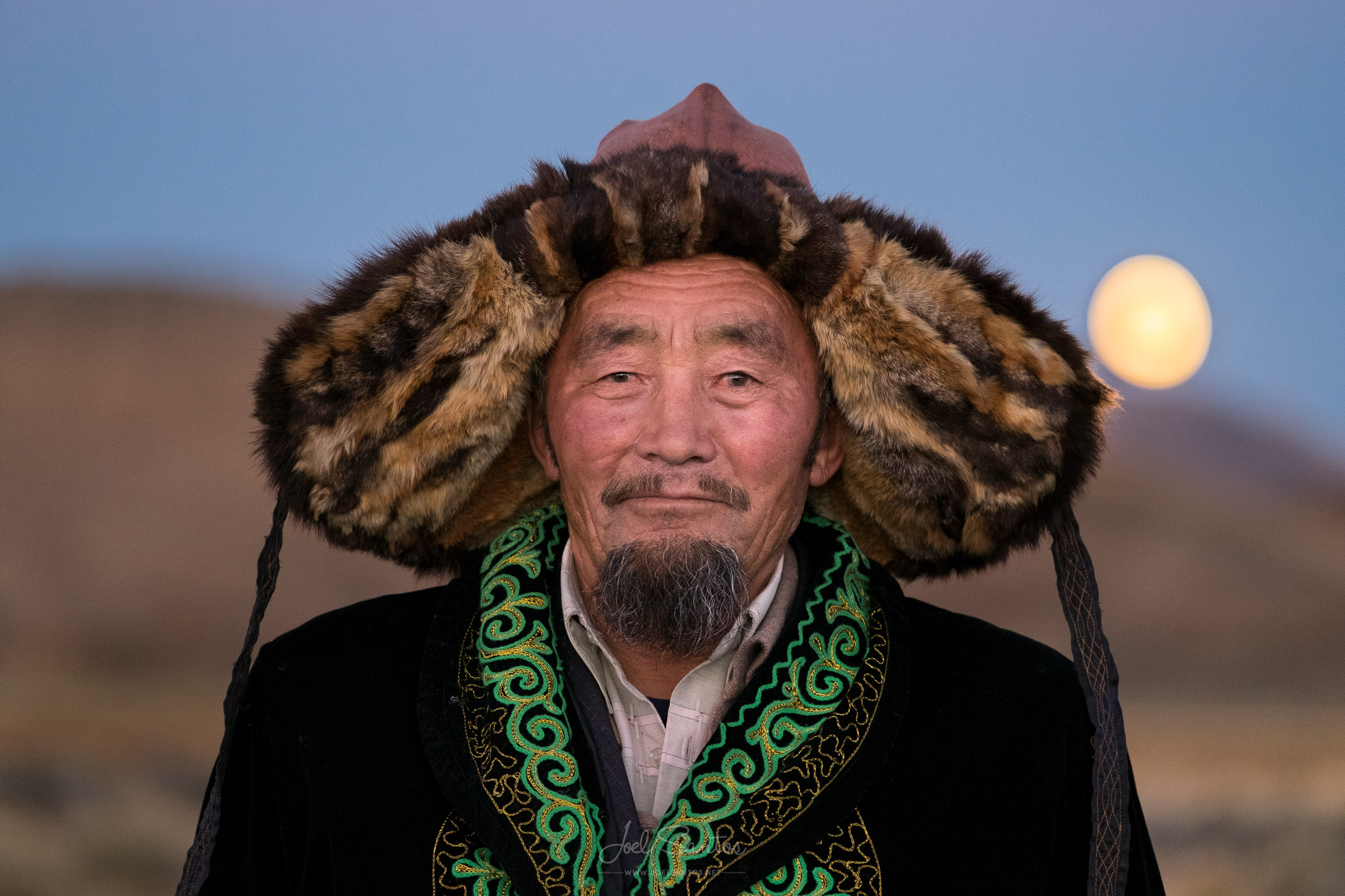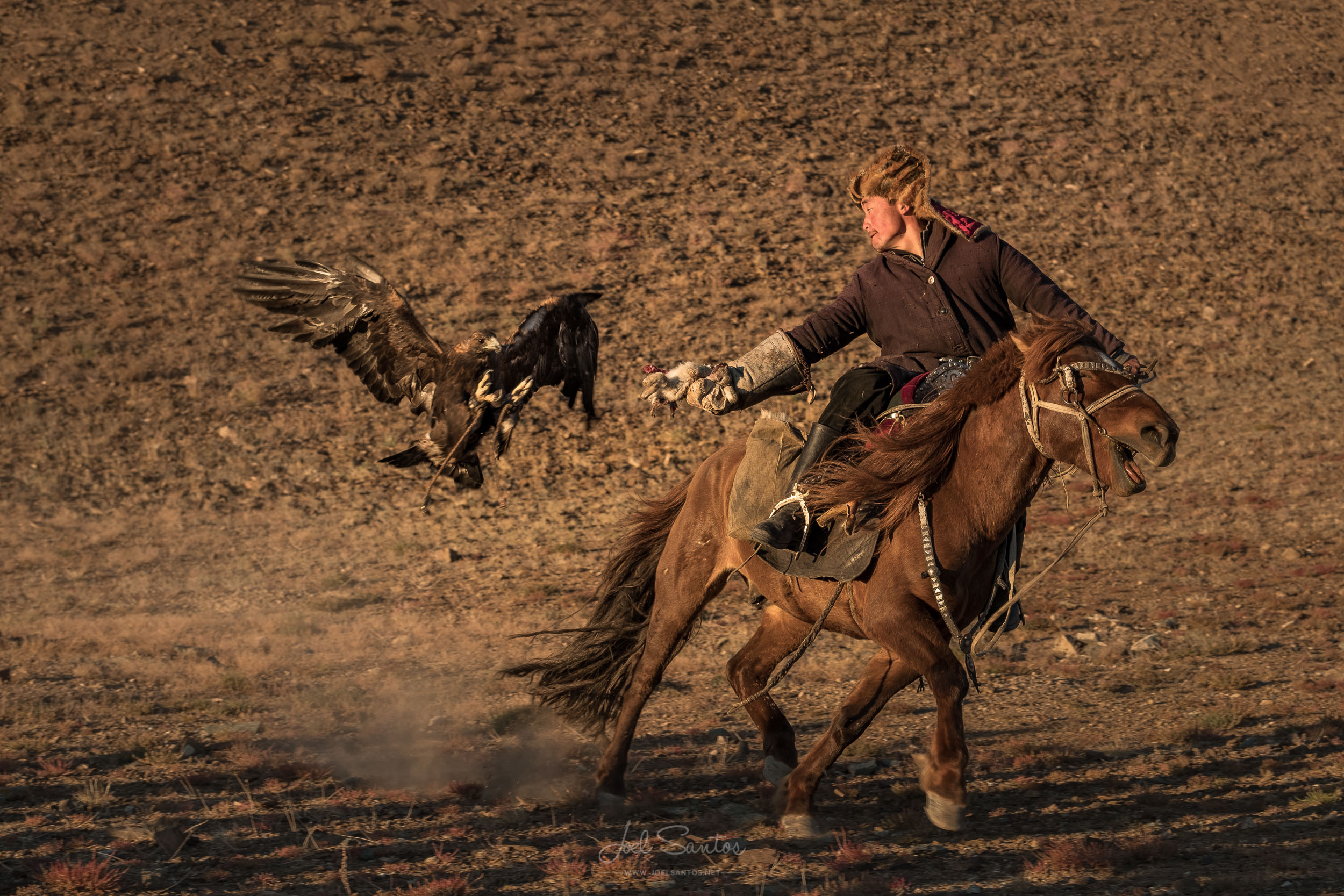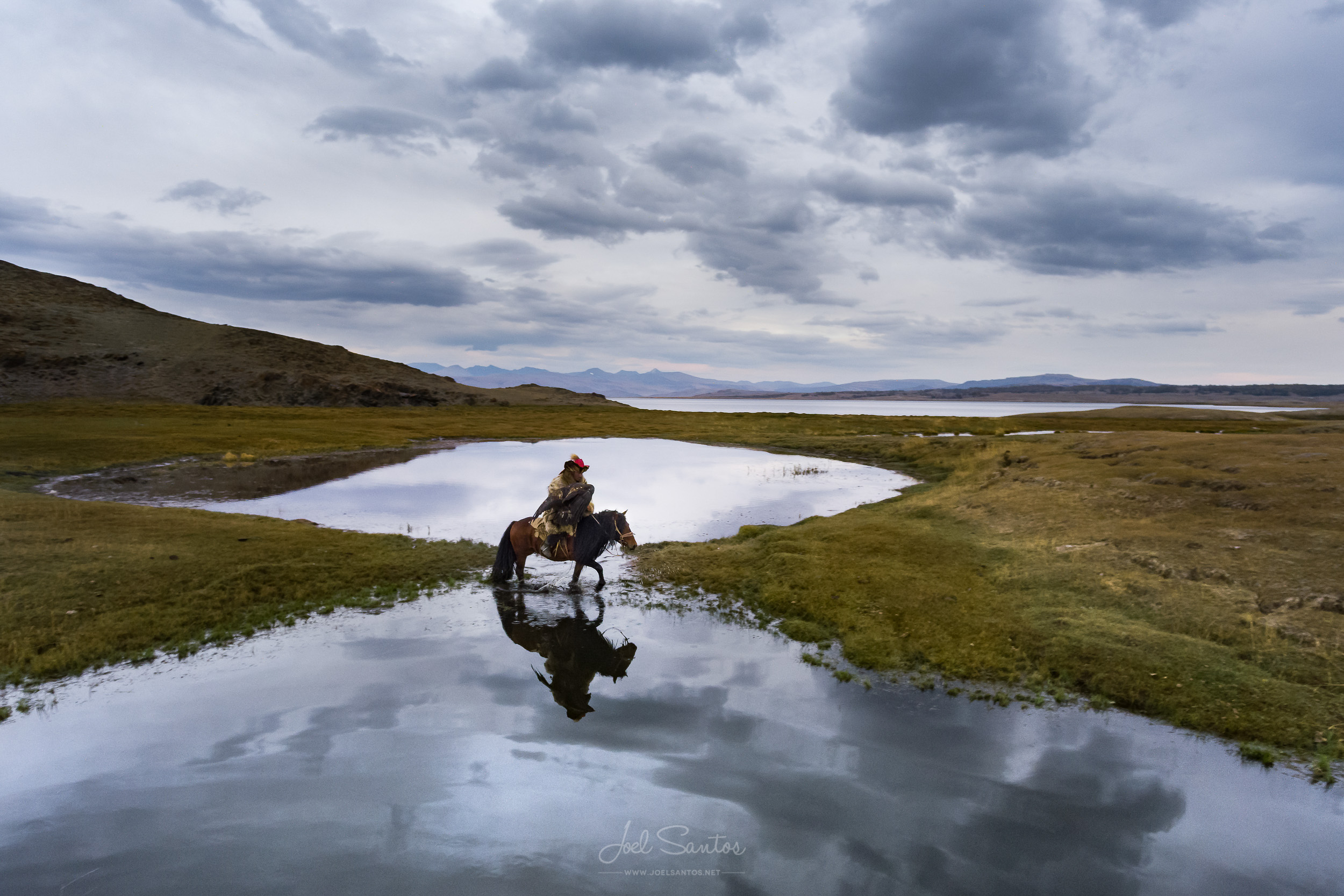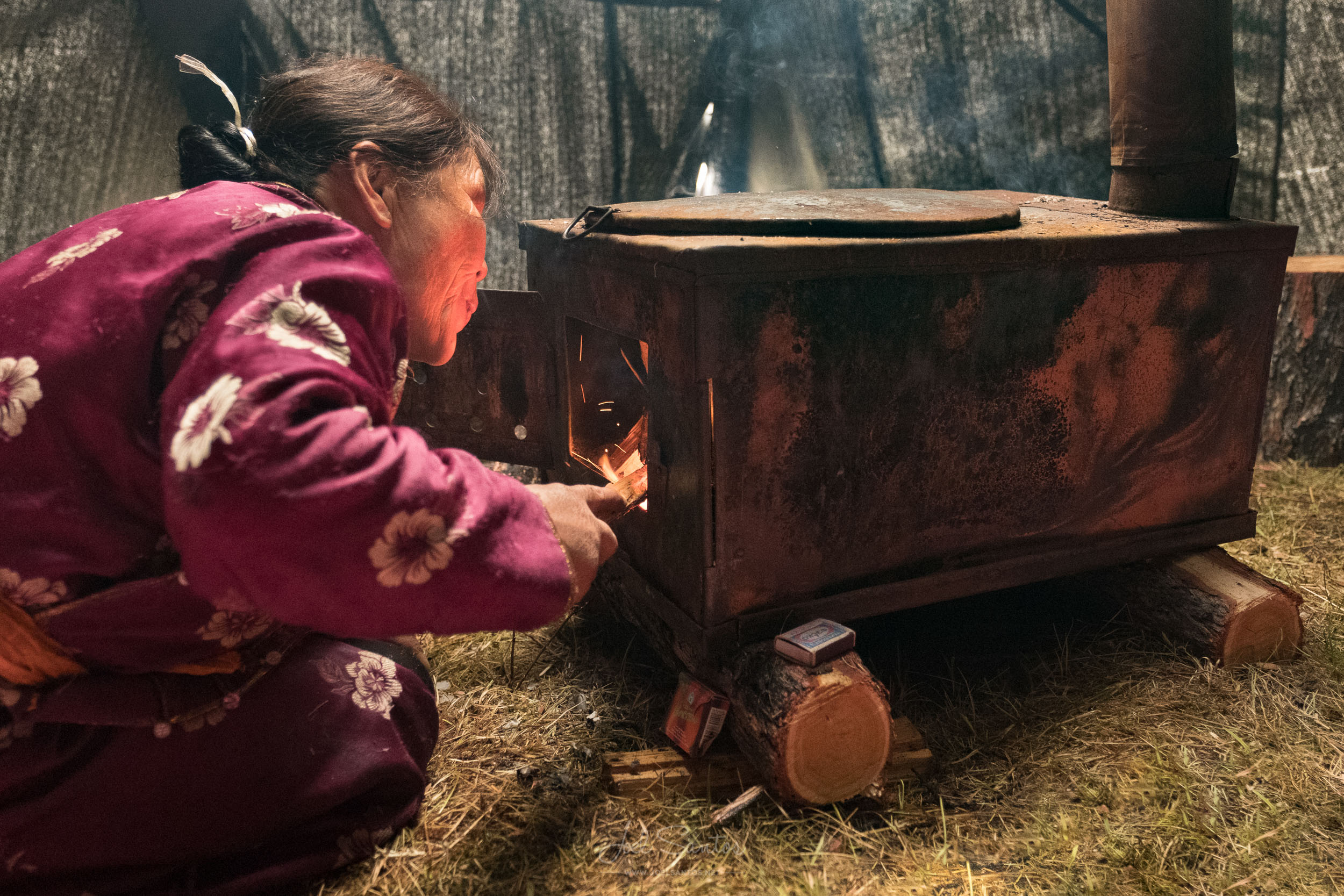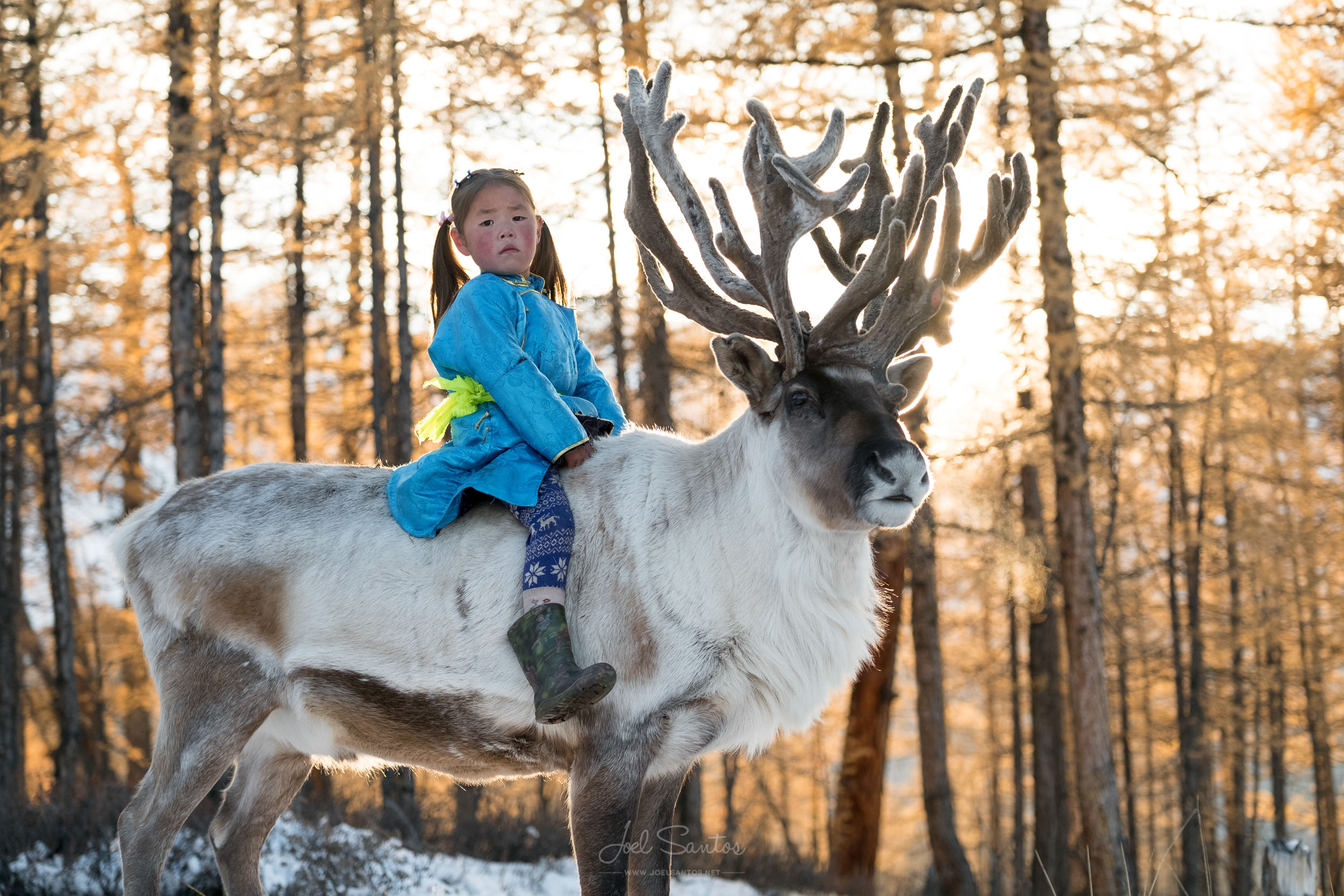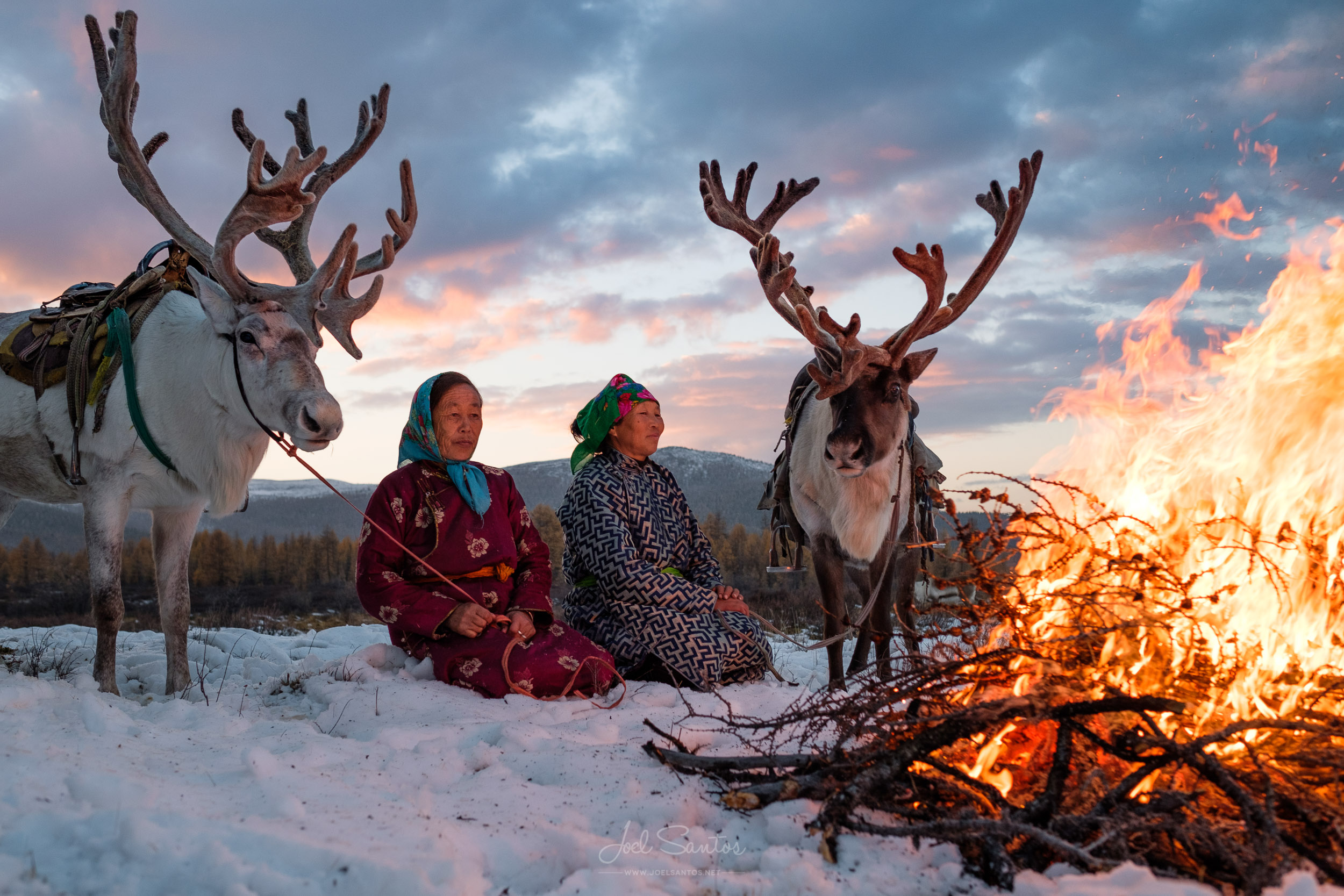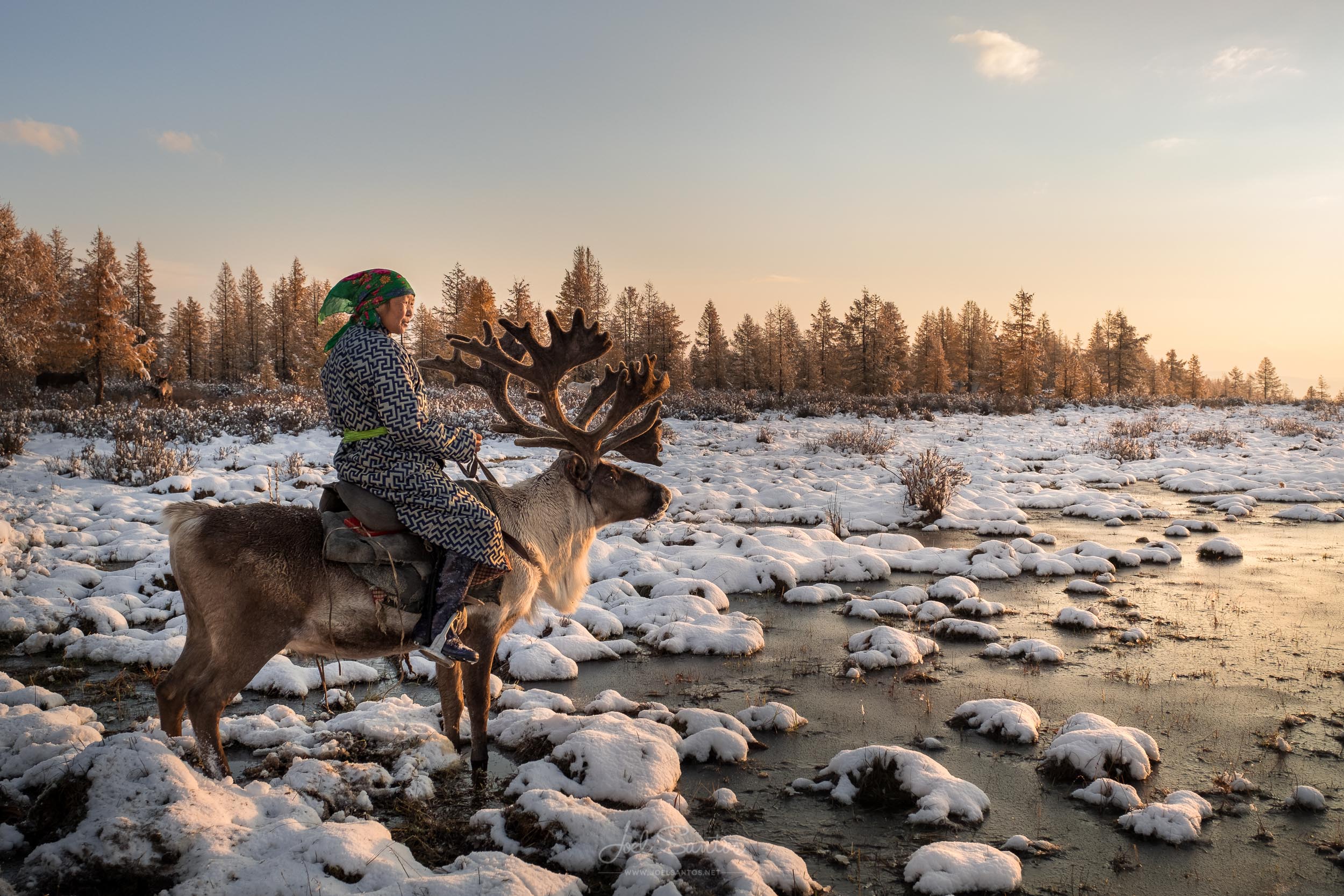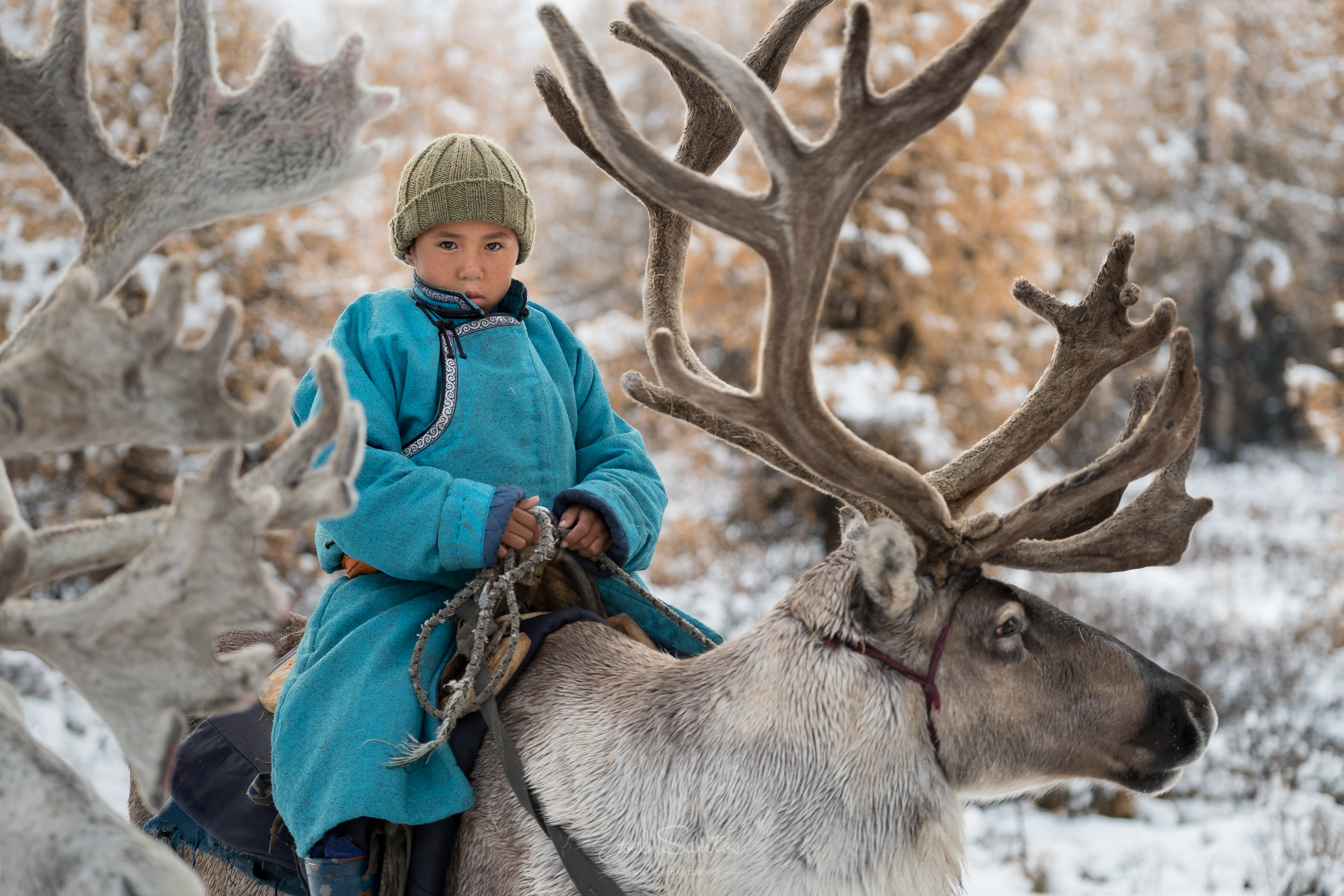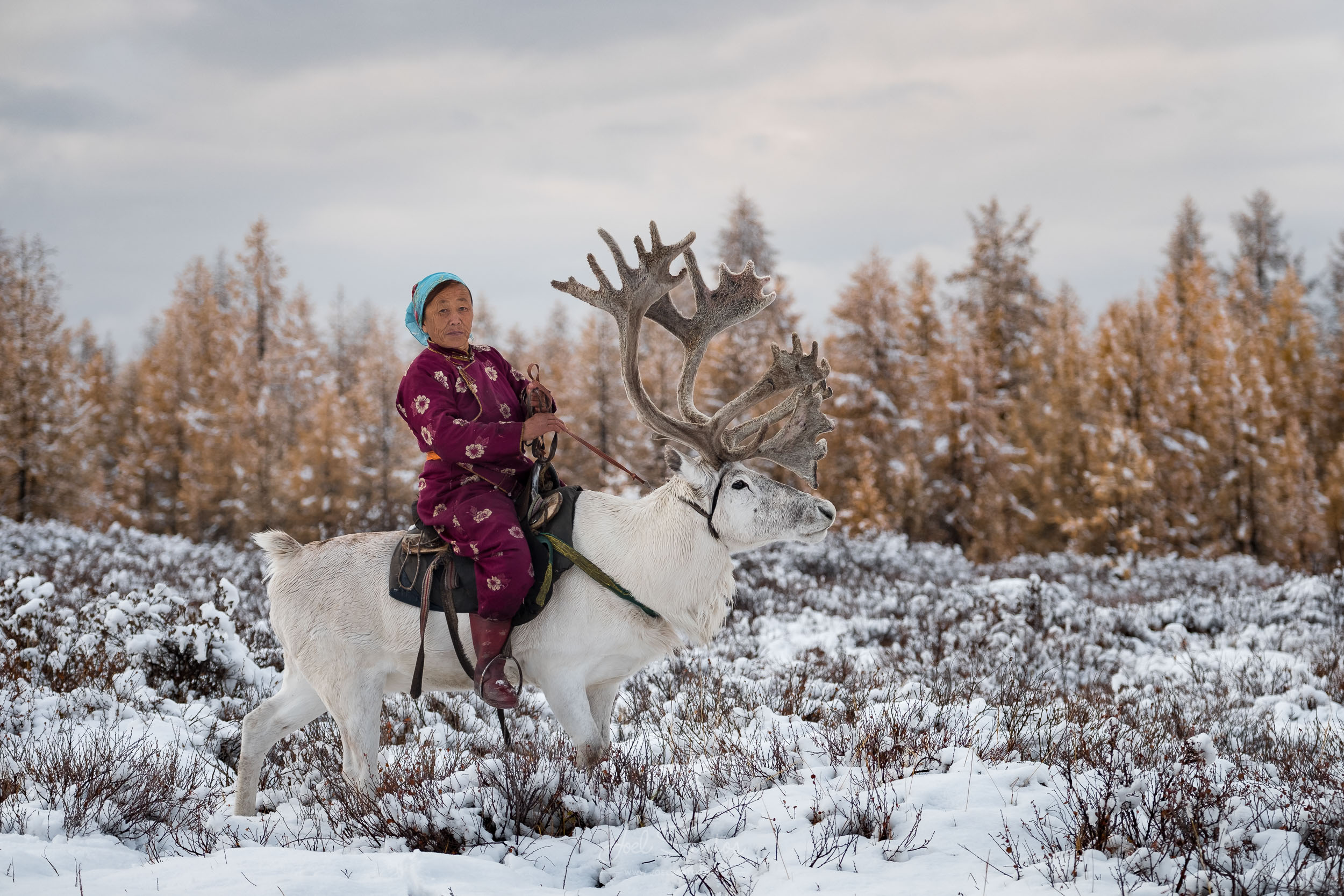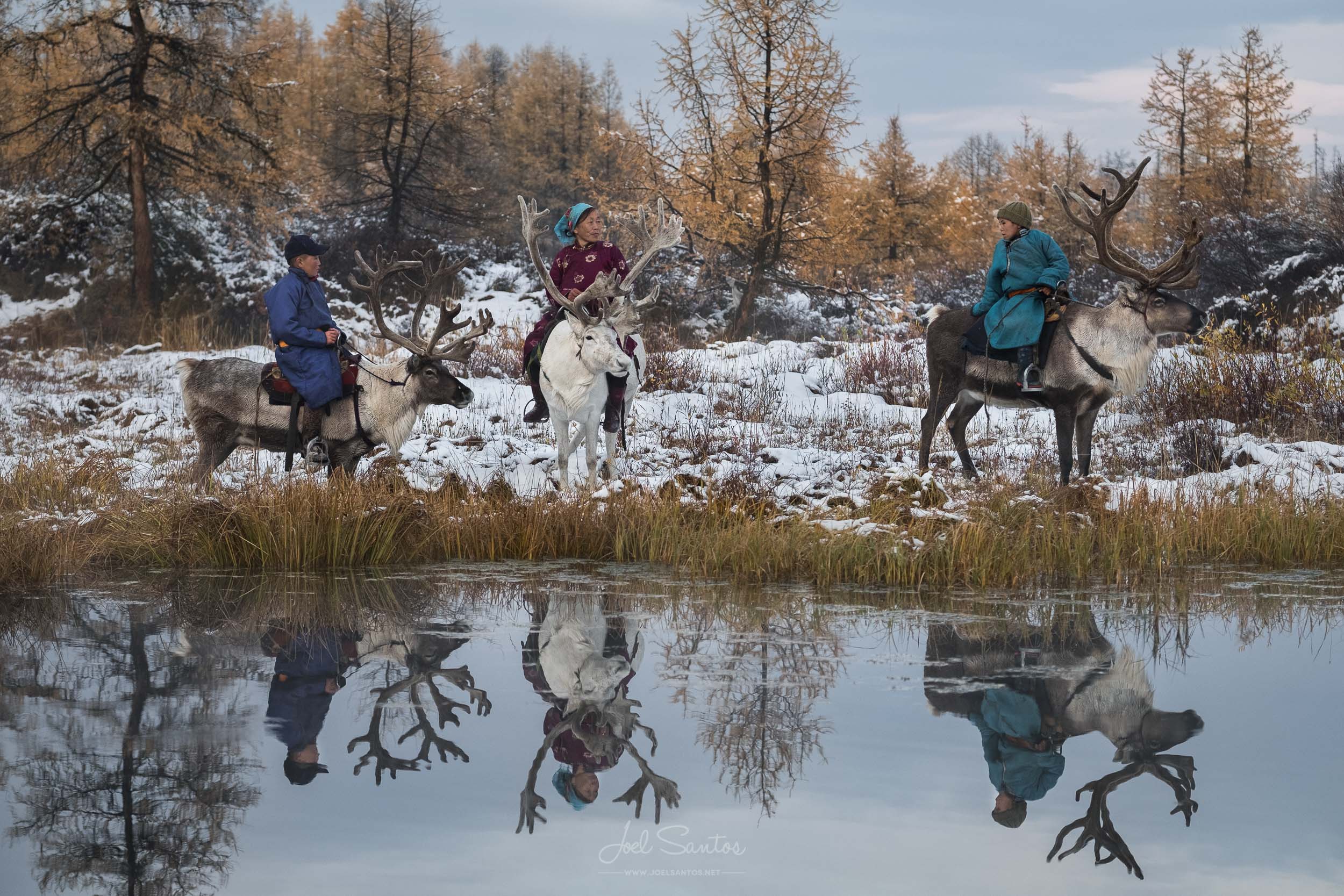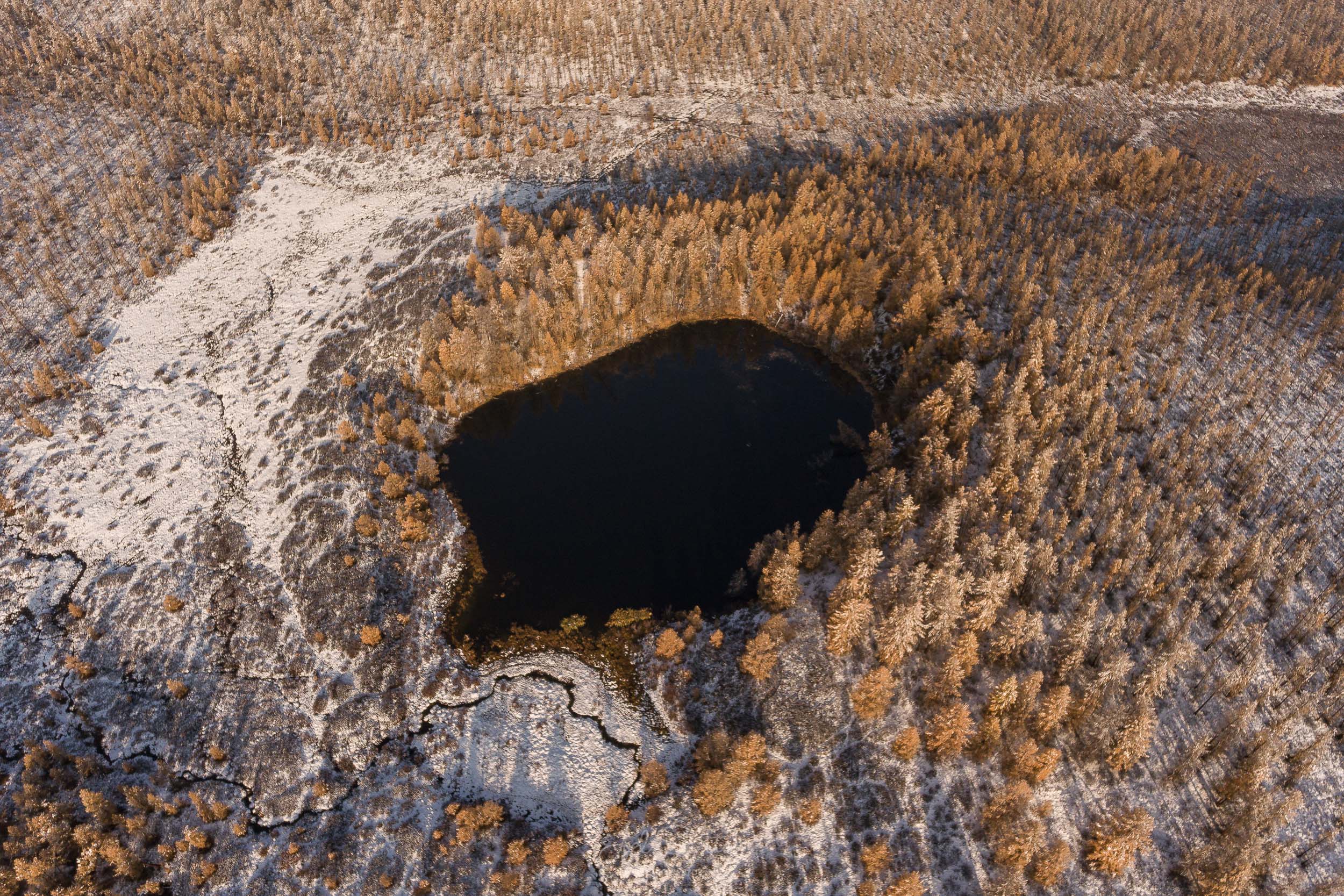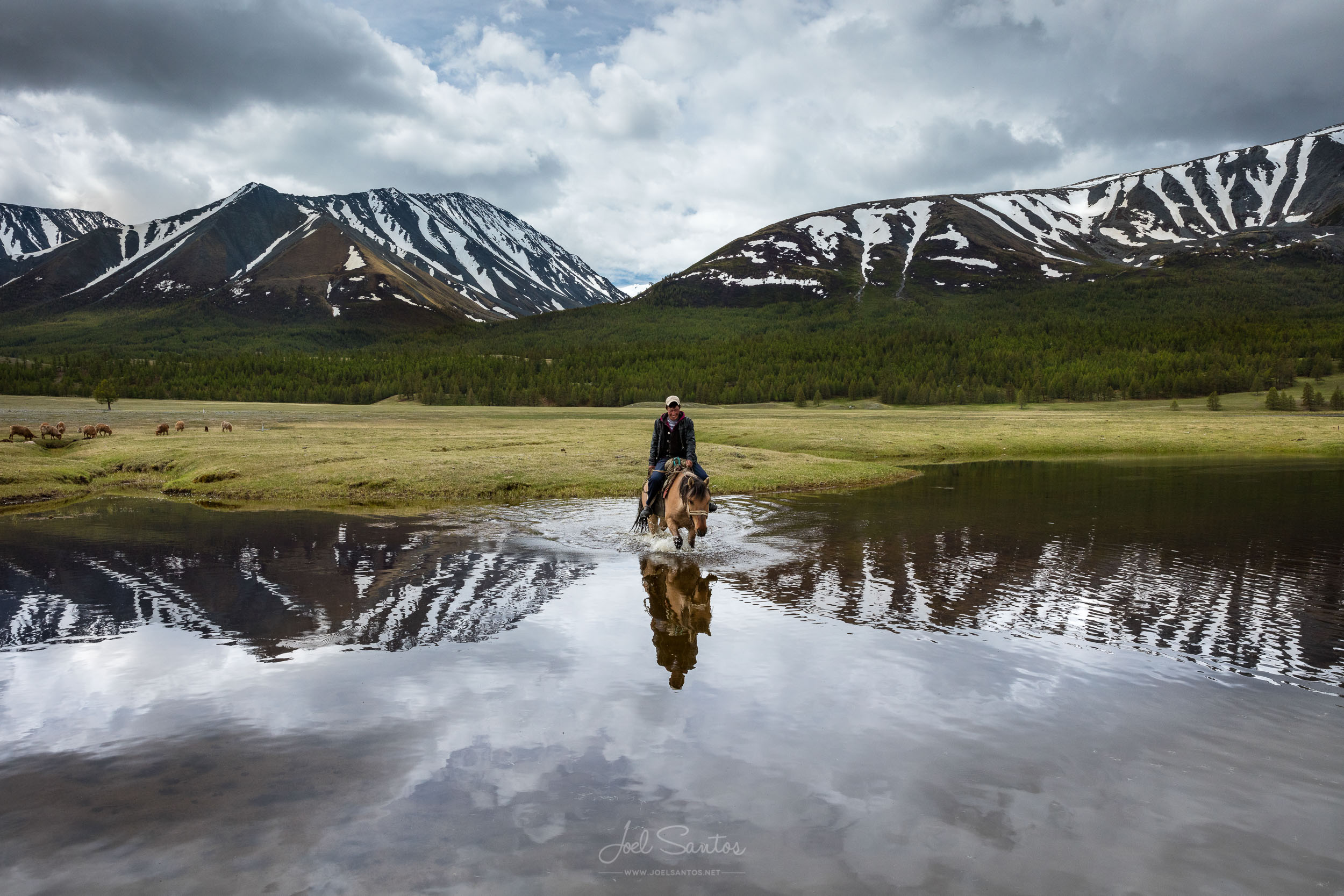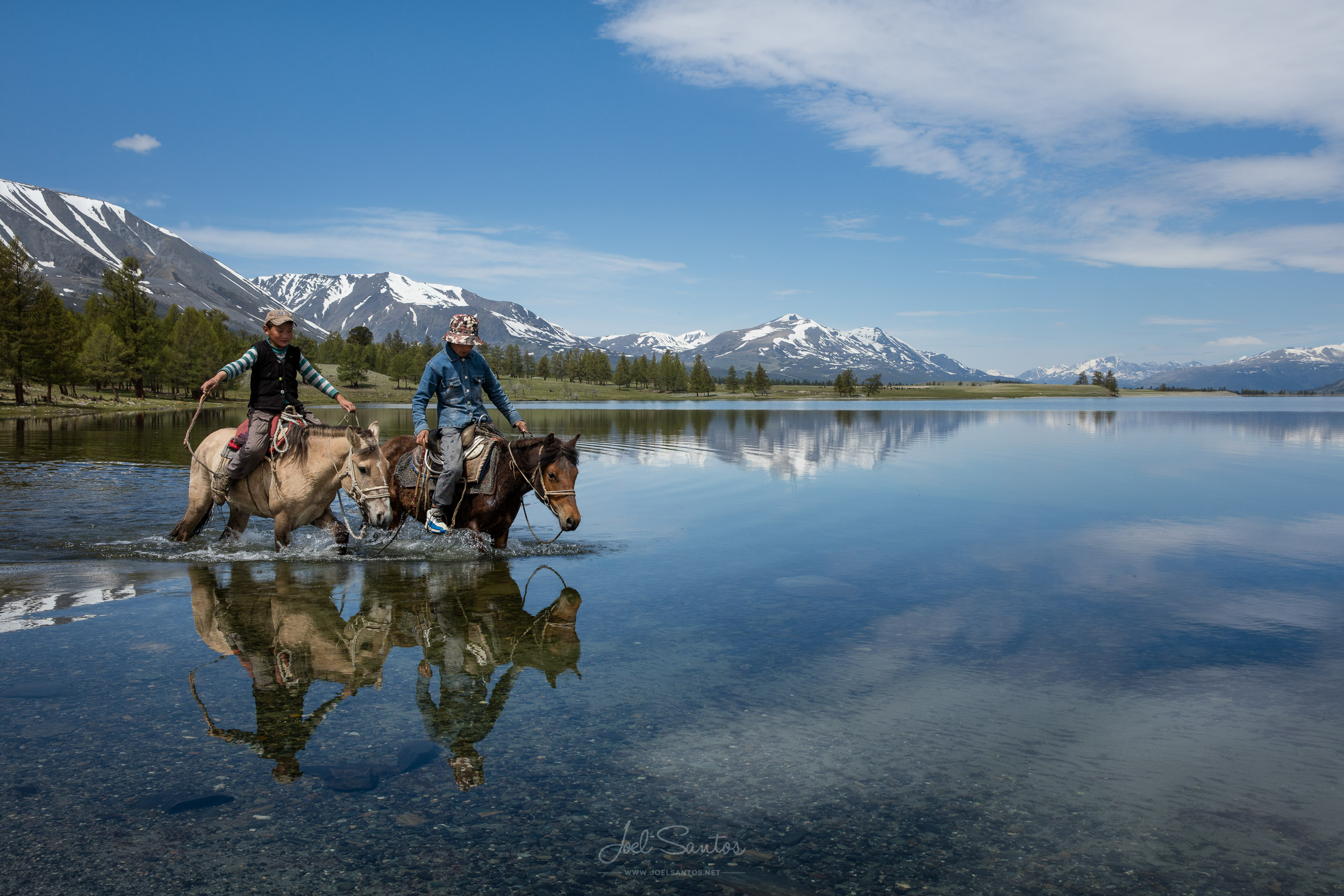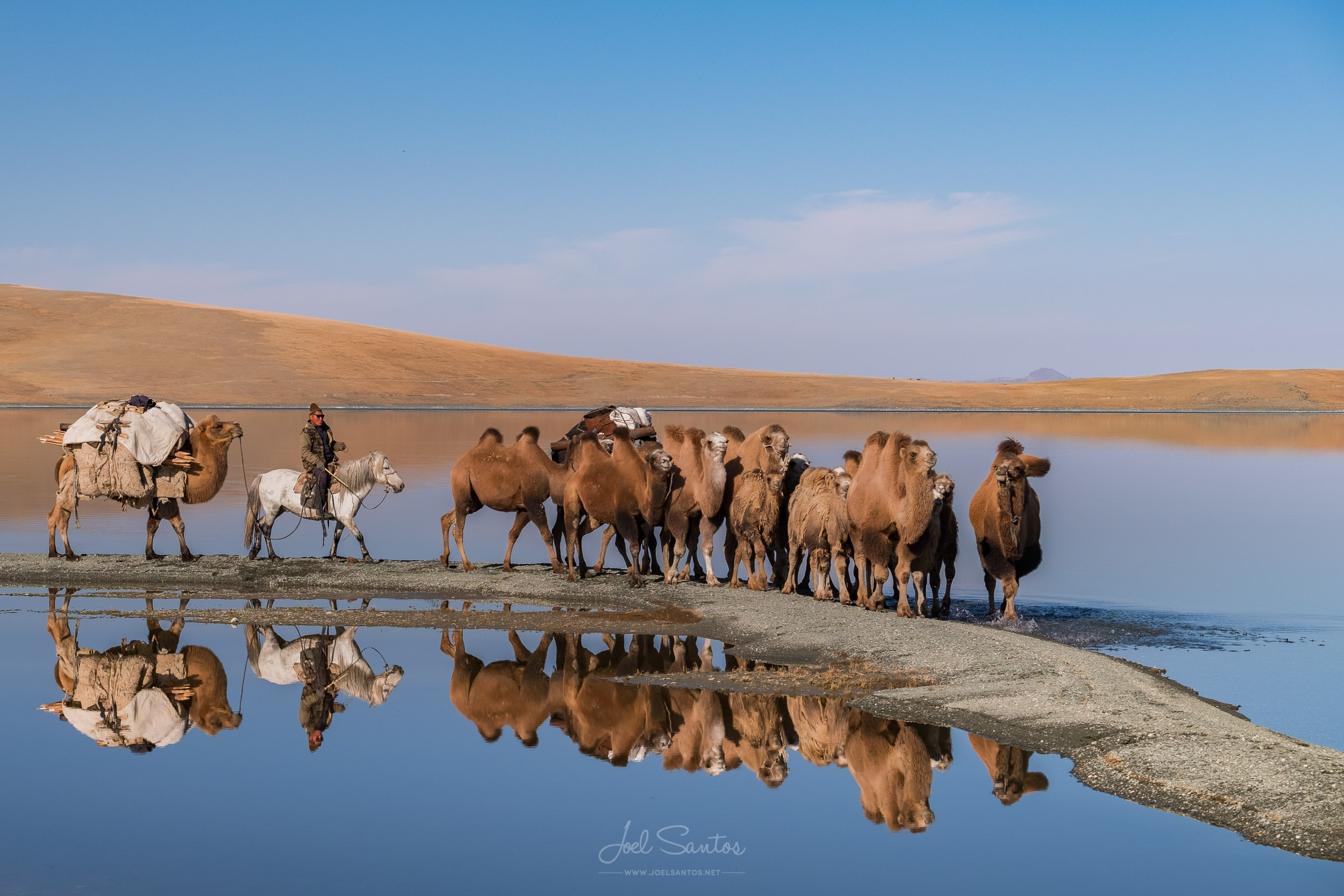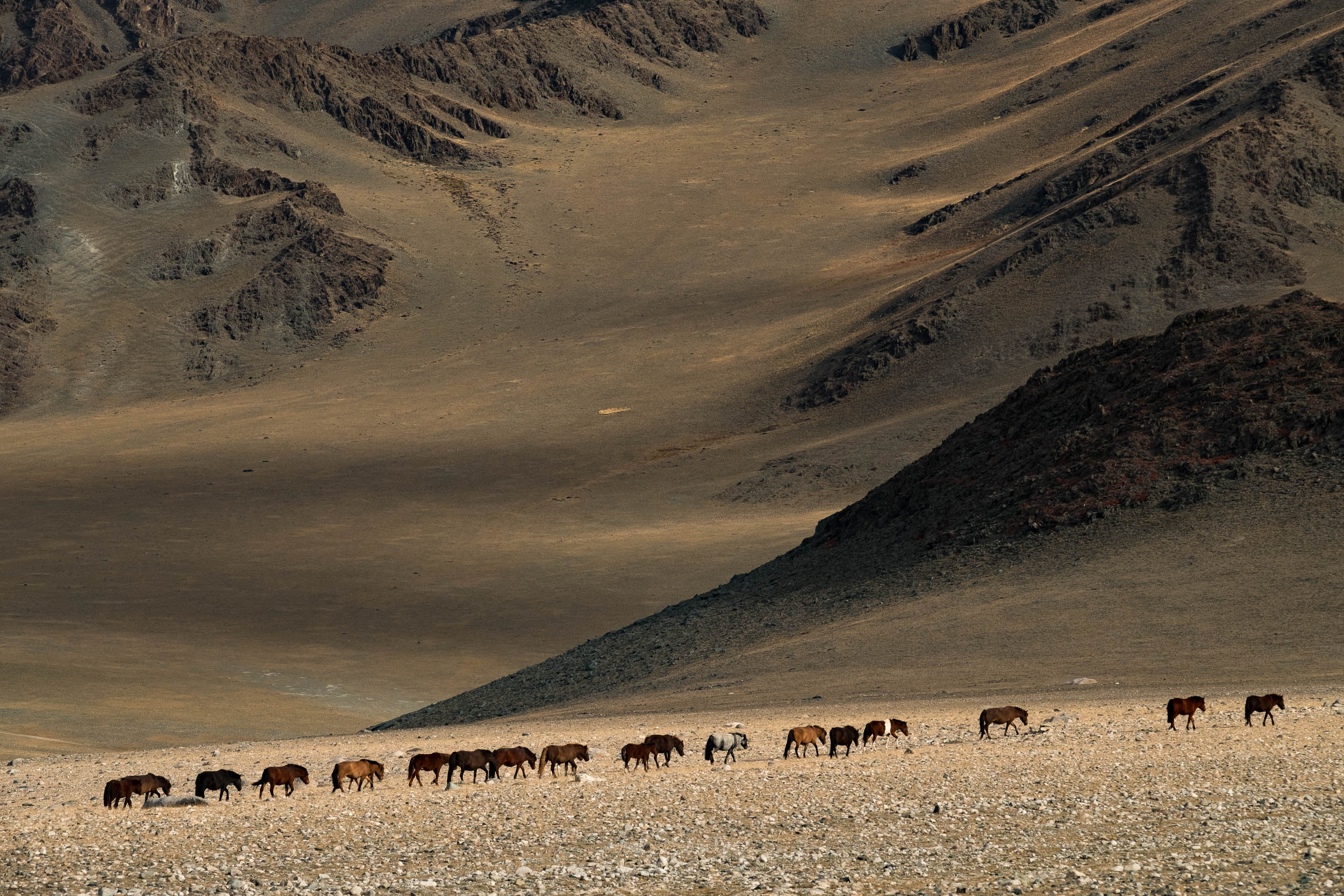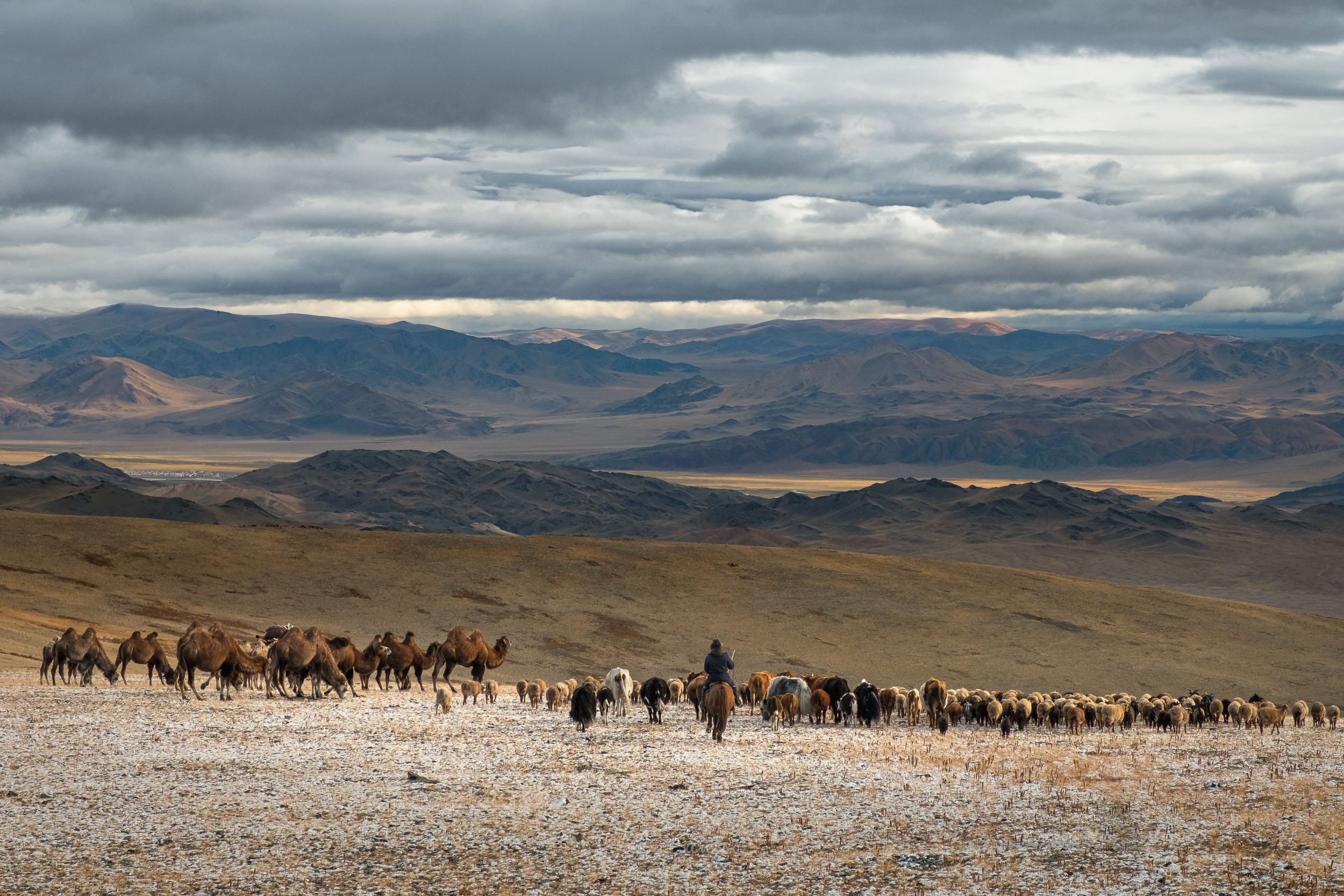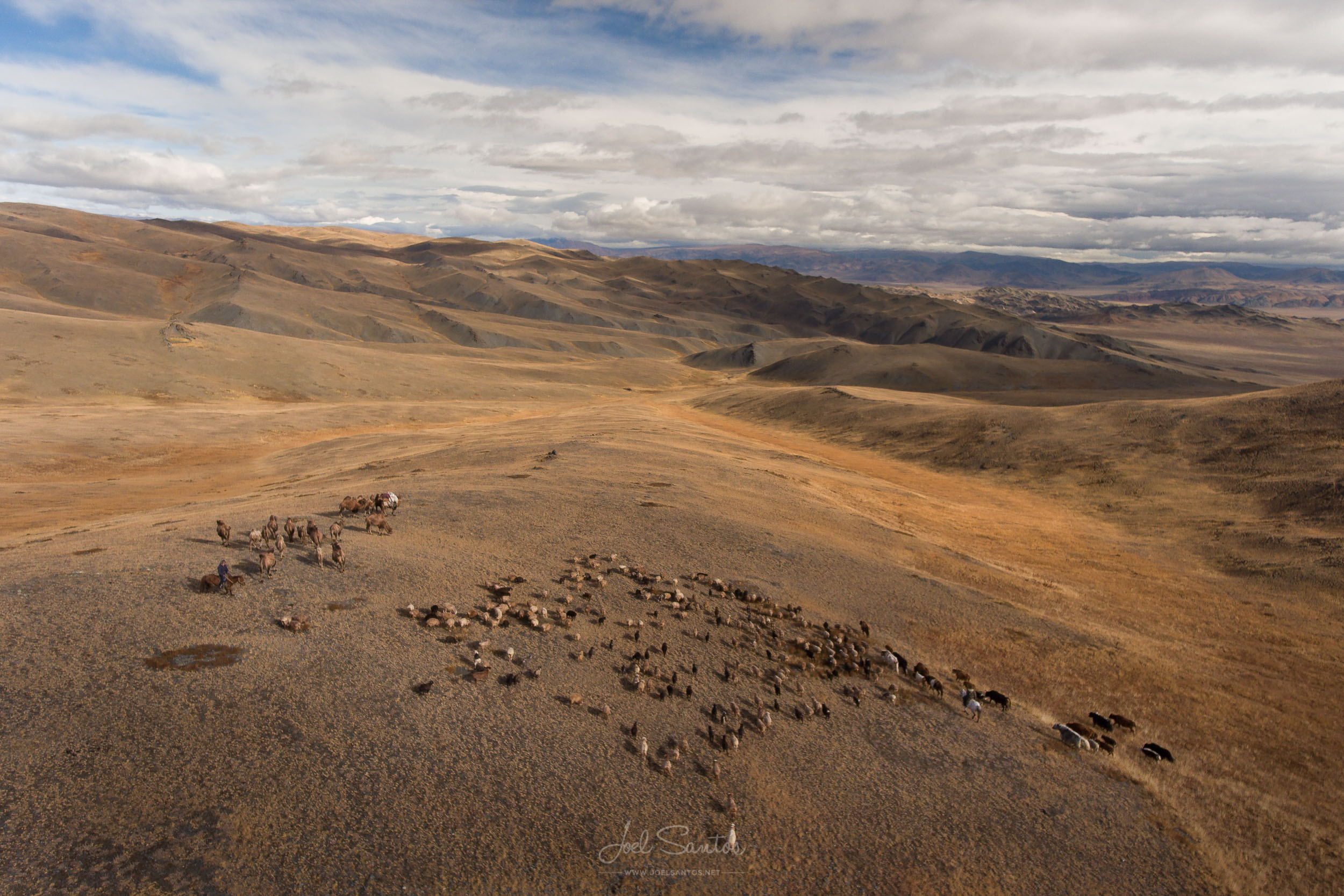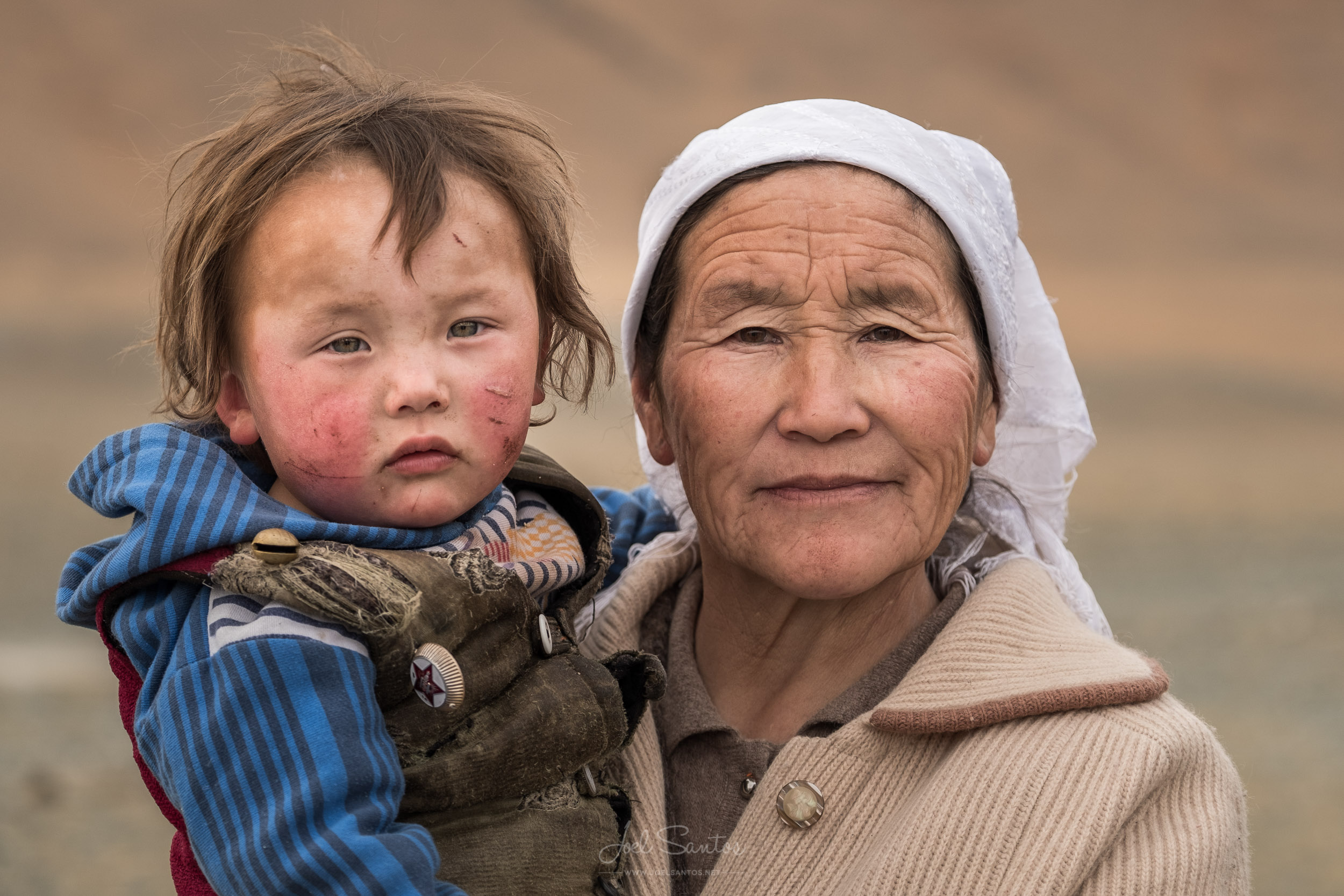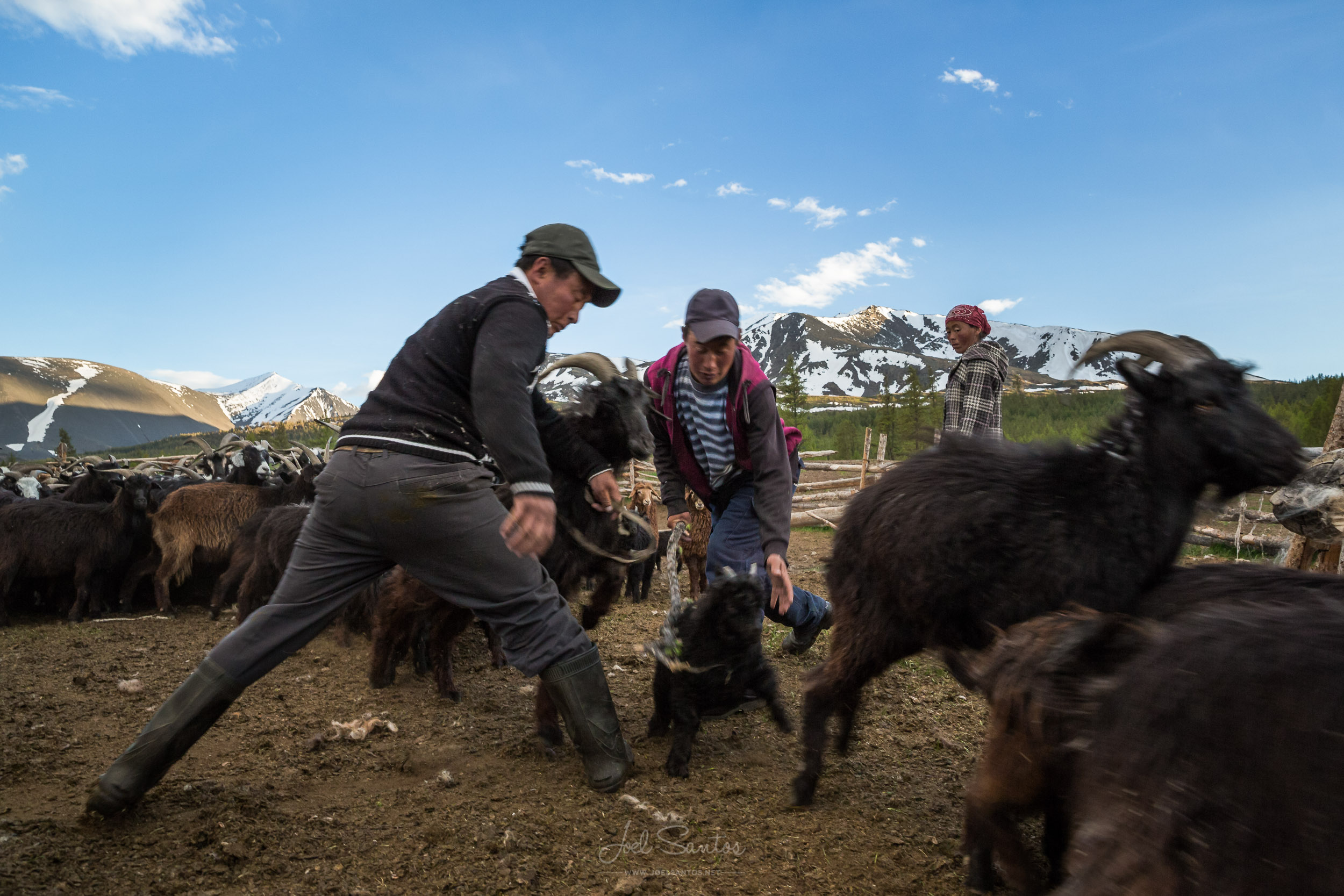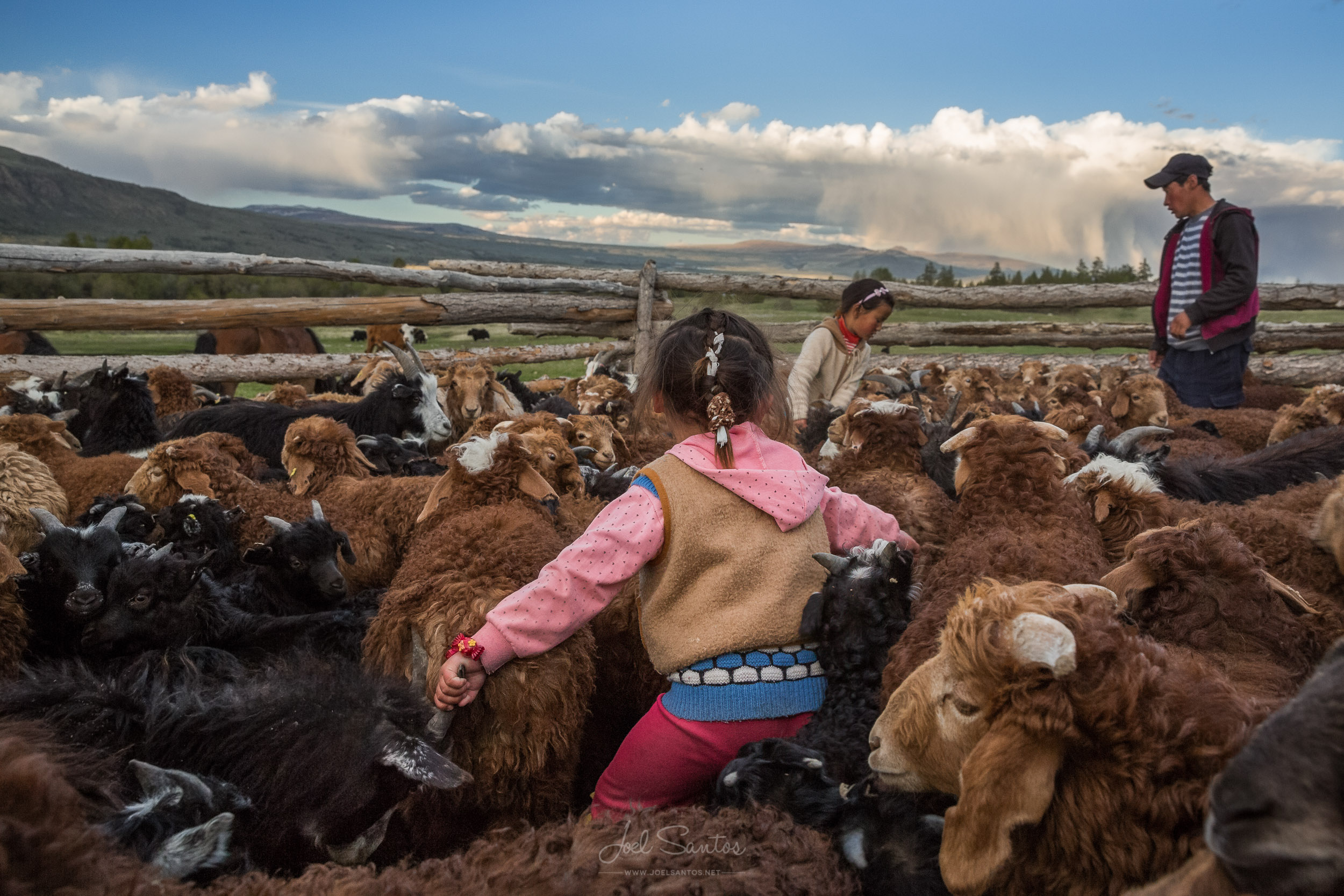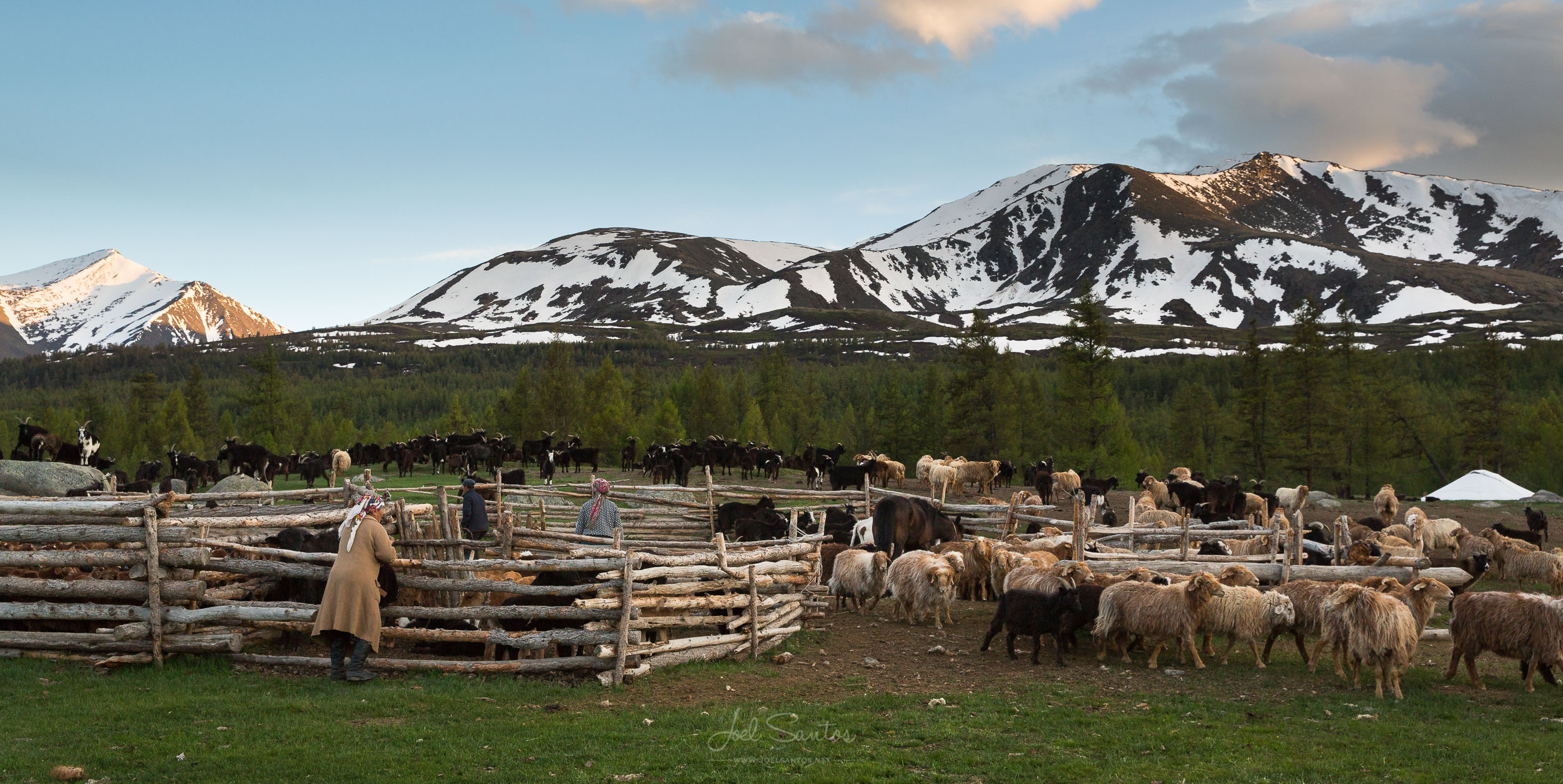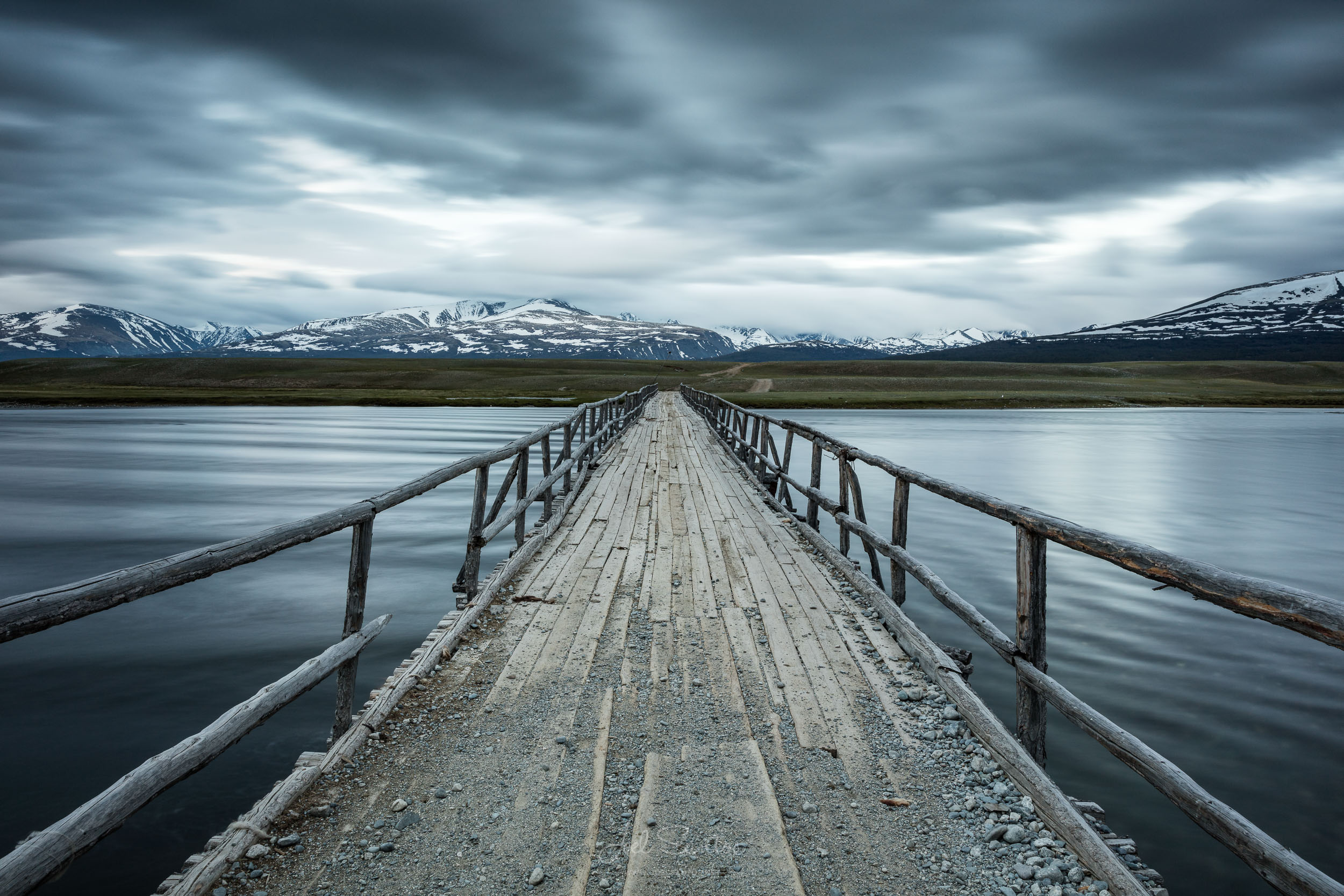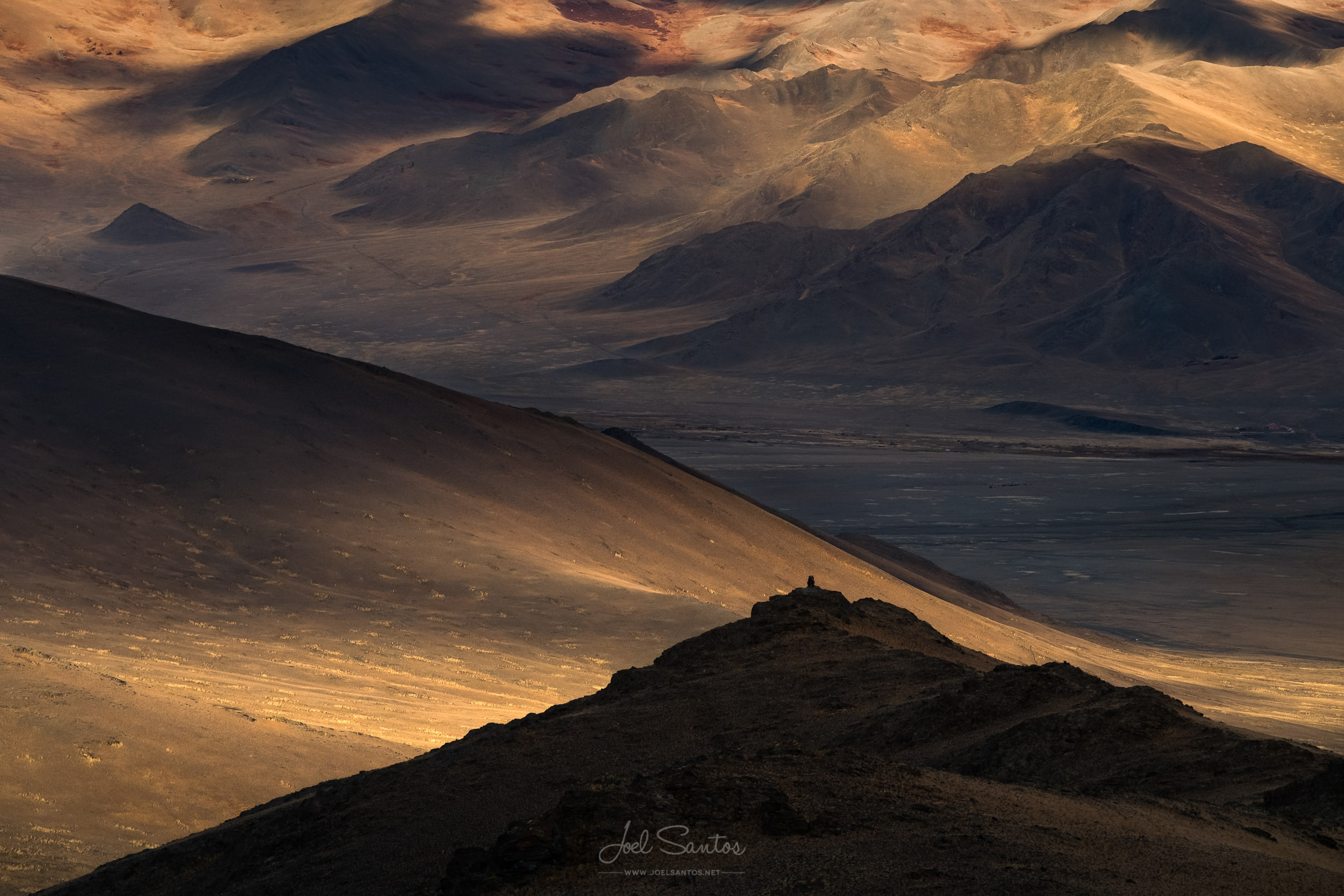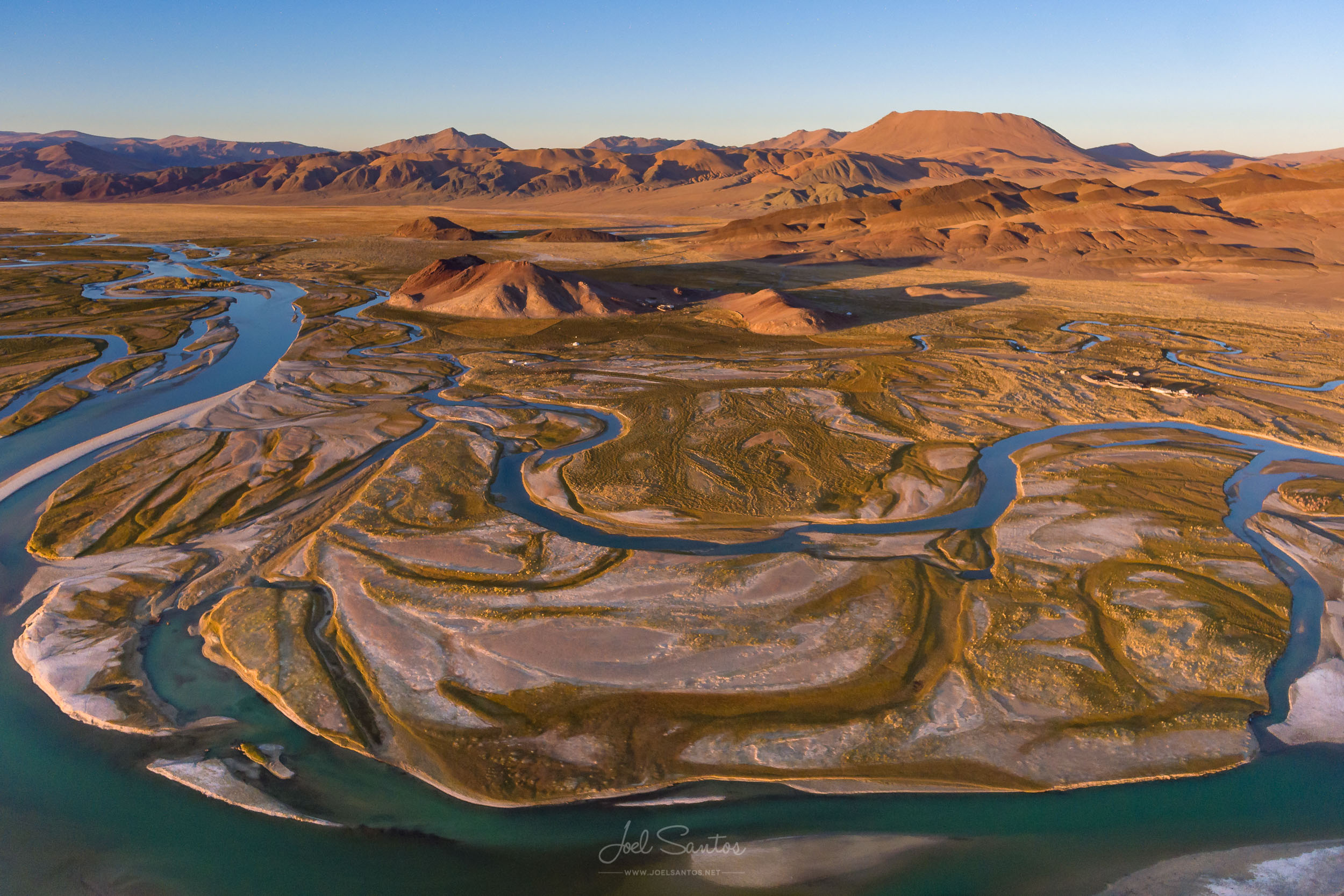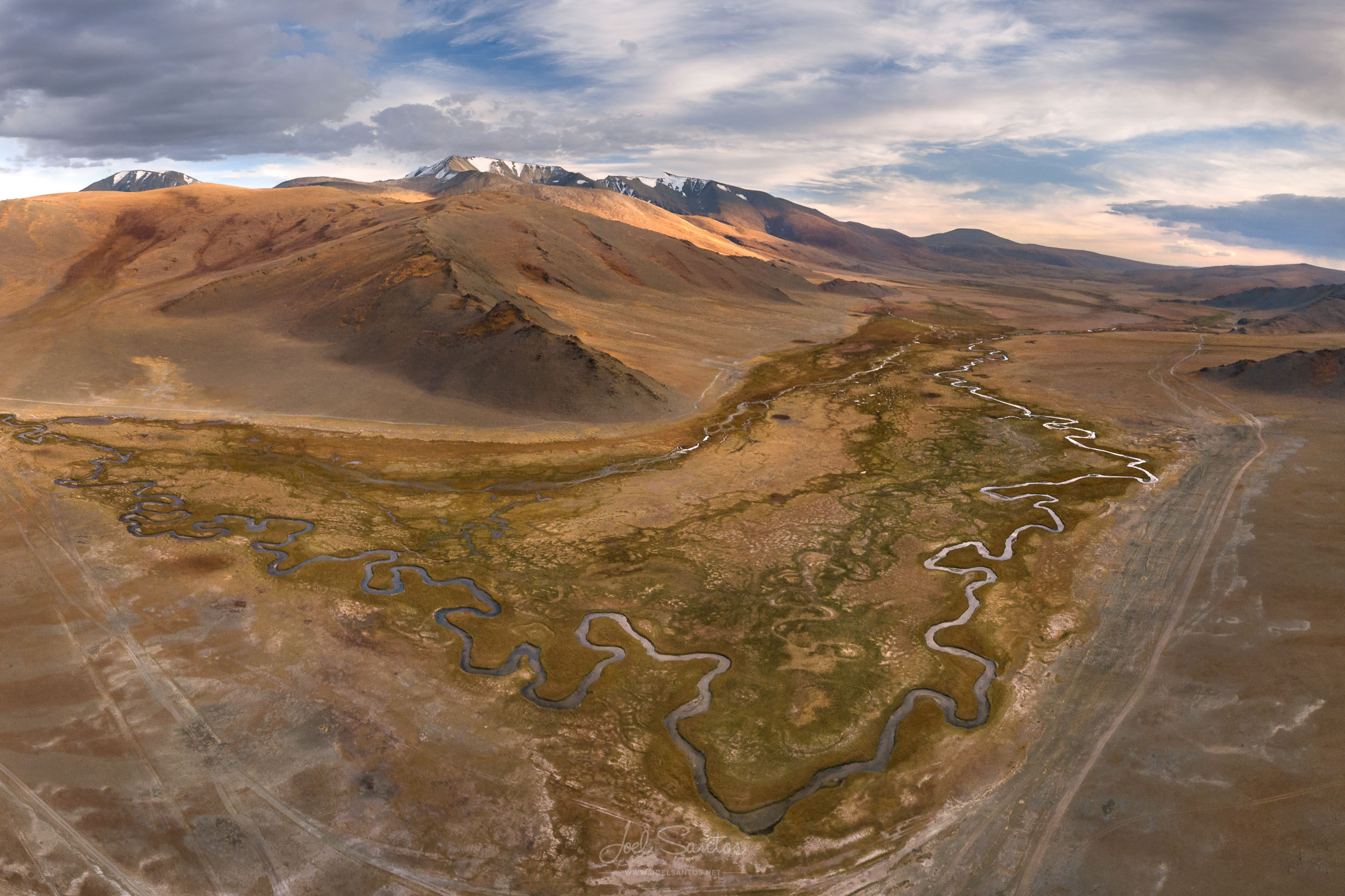Tsaatan - Brave the snowy wilds of Mongolia with this nomadic reindeer herding family
Photographer Joel Santos dived 1000km into the depths of Northern Mongolia to visit the Ganbaa family near Khovsgol Lake.
Despite only being able to spend three days in the Tsaatan family’s camp, Joel Santos travelled for four days to reach them - three driving and one on horseback - before repeating the epic journey to return home.
Joel said: “It was extremely tough, but not scary, since I take real pleasure in exploring and venturing off the track as much as I can.
“I actively put myself in those kinds of situations and escape from the routine that my overly organised life becomes as soon as I get out of my office.
“But of course, the extreme cold, being soaking wet, having my boots stuck knee level with mud, having no cell coverage, carrying all the gear and work with it in this context is demanding, very demanding.”
One of the youngest members of the family, Uchraa is already well trained in riding the family reindeer. From the age of two, Tsaatan reindeer are trained to carry children and at three they are able to carry adults.
Travelling with a guide and interpreter from Mörön, Mongolia, and Magali Tarouca, Joel met the Ganbaa family, led by Purev who lives in the same camp as Buyantogtokh, a widowed reindeer herder.
In the small Tsaatan community - called the Zyyn taiga community, meaning East Taiga - four couples live together alongside their children and grandchildren in a handful of teepees, which are heated using reindeer dung and iron ovens.
Two main communities live and herd in the area, the other is known as West Taiga and they keep over 1000 reindeer, while the East Taiga people keep roughly 500. The two communities maintain a close relationship and frequently travel on horseback or on reindeer to visit each other.
Purev and Buyantogtokh enjoy the warmth of the fire in the cold Mongolian weather
Joel Santos said: “Despite having easier access to horses than they did in Russia, they still prefer the reindeer and have an extremely close connection with them.
“I’ve interacted both with horses and reindeer and the latter almost behave like a dog, in the sense that they are extremely docile, they smell your hands out of curiosity, they even lick them, always in a gentle way.”
Drone captures this stunning view across the freezing wilds in Mongolia
Joel has been documenting the lives of nomadic Mongolians since June 2015 when he followed the Kazakh migration, before returning in September 2016 to follow another migrating family and discover the remote lives of the Tsaatan.
The Tsaatan people originally lived in the Autonomous Republic of Tuva in Russia but they fled to Mongolia in 1940 to escape the Russian Army’s recruitment for World War II.
Joel said: “I mean, on the way to the Tsaatans we got the worst weather possible — heavy rain, wind, cold, mud, you name it — and I thought that the whole experience would be ruined.
“Nevertheless, as we were getting closer and closer, the temperature got even lower and the rain became the first snowfall of the year in that region.
“And, all of the sudden, as we rode the horses to get to the Tsaatan family, the snow looked like a magical and enchanted Christmas tale.”
Purev of the Ganbaa family poses next to one of their teepees
In recent years, strict hunting regulations have been introduced, making large patches of the Tsaatan’s homeland useless to them, as they rely heavily on hunting to survive.
Joel said: “The world is changing rather quickly and most of the ancestral traditions, culture and people are fading away or changing into completely new social paradigms.
“The nomadic families still exist but, as we know from European history, it’s likely that they’ll be incredibly more difficult to subsist, due to changes in laws, economic pressures, and foreign acculturation.
“All together that makes this whole experience feel like time travelling and I know deep in my heart that these experiences are extremely rare, from which we can learn many things, as human beings, that we can no longer learn from our western schools and life patterns.”
Watch this short documentary
VIDEOGRAPHER / DIRECTOR: JOEL SANTOS
PRODUCER: HANNAH STEVENS, NICK JOHNSON
EDITOR: JOSHUA DOUGLAS
Take a more in depth look and discover the nomadic traditions in Mongolia






